I started reviewing non-Transformers stuff on this blog by talking about a Figma of Samus Aran, bounty hunter extraordinaire and protagonist of the Metroid video games, so it’s only appropriate that my first Non-Bot entry of the new year is of the latest model.
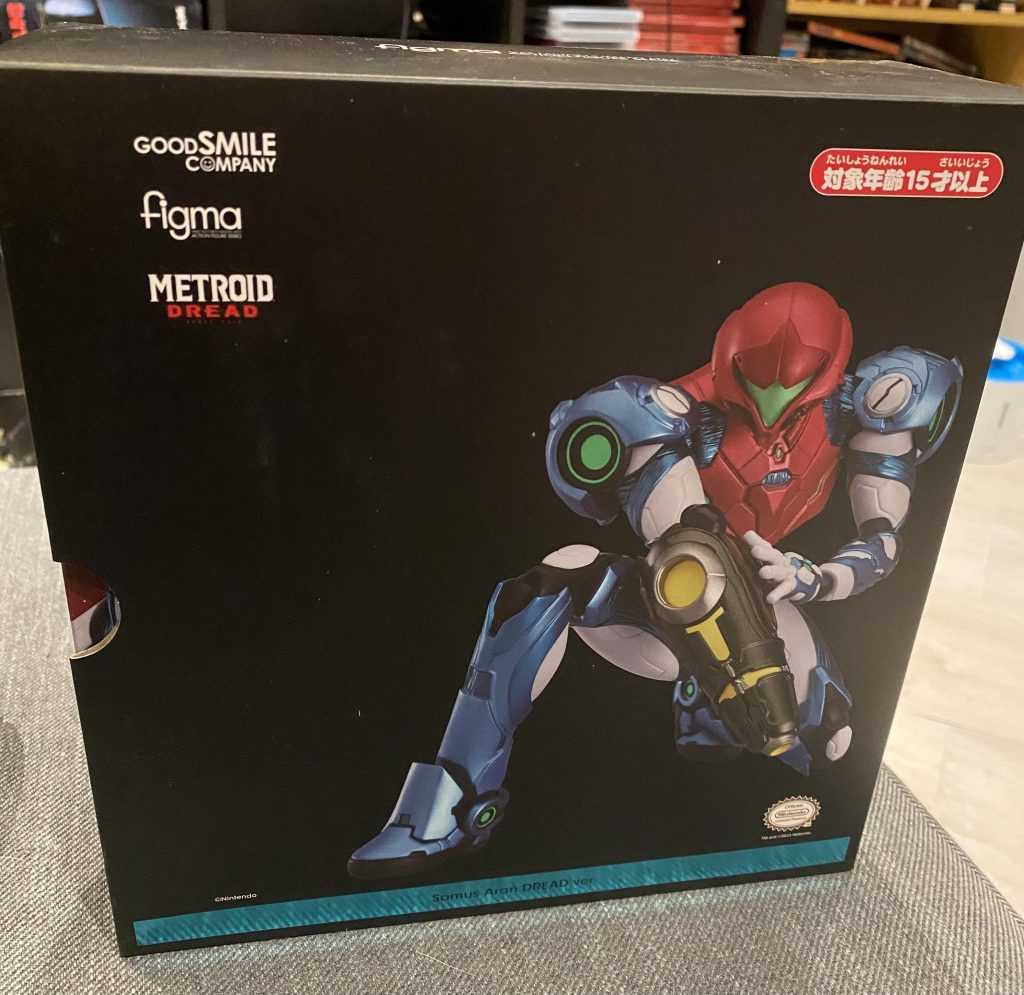
They really went all out on the Prestige Packaging ™.

This is probably to make you feel better about how expensive it is.
As I said at the time, the Metroid games are another big fixation of mine. They’ve never been top sellers, and there’s never been as many of them as Nintendo’s other first-party titles, like Zelda or Mario, but it’s a series that’s always been well-loved, and I’m among that crowd. I can’t even adequately explain what a big deal it was when Metroid Dread was first announced in 2021, and then released a mere five months later.
For one thing, Metroid Dread was a game that had been rumored to exist since the Nintendo DS era, and everyone assumed had been quietly canceled at some point, due to how long we’d gone without hearing about it. And not only was Metroid Dread suddenly very real, and coming out in a few months, but it was also revealed to be a proper sequel to Metroid Fusion, the 2002 Game Boy Advance game that was, until then, the chronologically final entry in the story (every other release between that and Dread was either a midquel of some kind, or a remake), meaning we got to see the franchise’s main story finally continue.

Samus versus an EMMI, a nigh-indestructible hunter robot.
And what a game Dread turned out to be. A side-scroller like the older titles, it saw Samus Aran lost deep in the underground labyrinth of the planet ZDR after being left for dead and robbed of her equipment. The game is about exploring and locating new abilities to re-power yourself, while trying to escape back to your ship on the surface, as you contend with sinister robotic hunters, giant monsters, and all other manner of obstacles along the way, and learn new, unexpected new information about the Chozo, the mysterious ancient alien race that raised and trained Samus. I replayed it at the end of 2023 in anticipation of this figure coming out, and it’s still just as buttery-smooth to control and play as it ever was, with my only grouse being how disproportionately hard some of the boss battles can be (if you haven’t played it, there’s no shame in starting out in Rookie mode. You’ll need it).
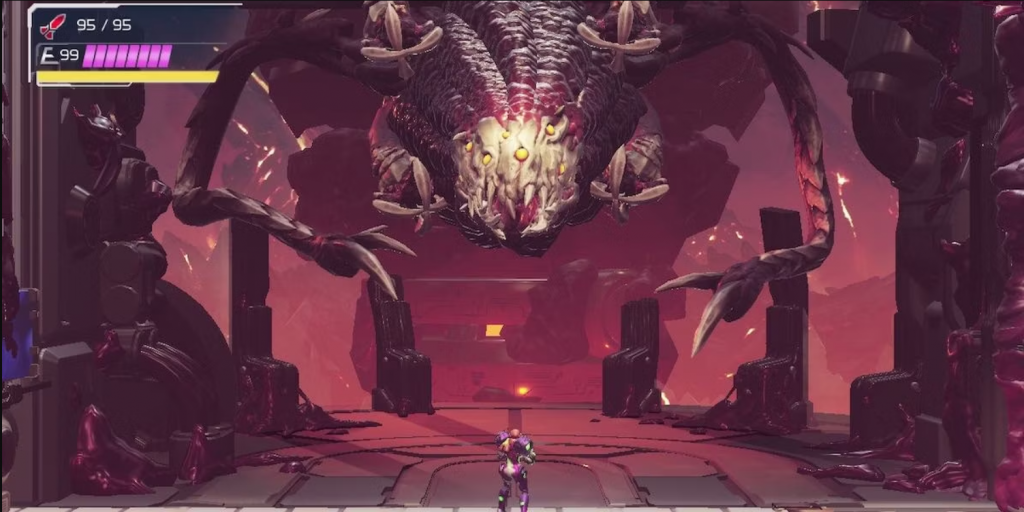
This guy, specifically, can go to hell.
As for Samus herself, this new game saw her armor get a total design overhaul, thanks to two games worth of Stuff Happening To Her Suit, and her sleek new look fit the game well. This particular Figma is based around her new Power Suit, which is her starting armor in the game, before it gets any upgrades. I was always going to try and hunt down a new figure of her, but it being based on her cool new look from a cool new game really sweetened the deal. And it needed to be sweet, because as a Figma, she came with a hefty price tag, somewhere in the low hundreds in Canadian dollars, after shipping and exchange. It’s not an amount of cash I drop lightly, so she had a lot to prove.
The Sculpt
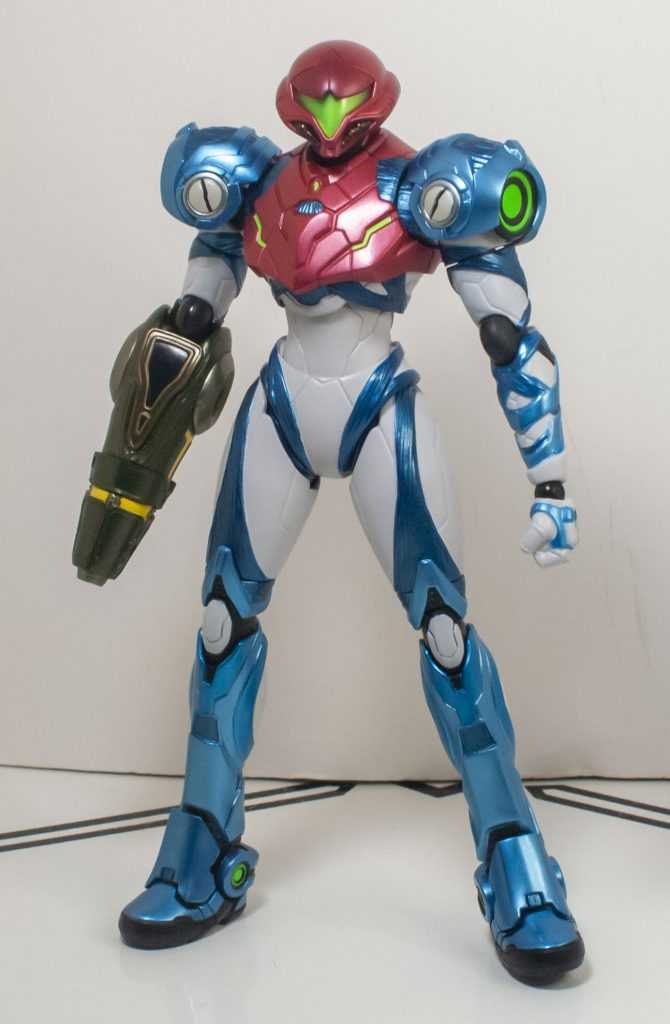
Fresh out of the Save Room.
Like most modern action figures, Samus is at the standard six-inch scale, though if they wanted to be accurate, she ought to be taller than most of them, considering she’s canonically six feet, three inches in height. Maybe I can pair her with my Playmates Star Trek Universe figures, which are five inches.
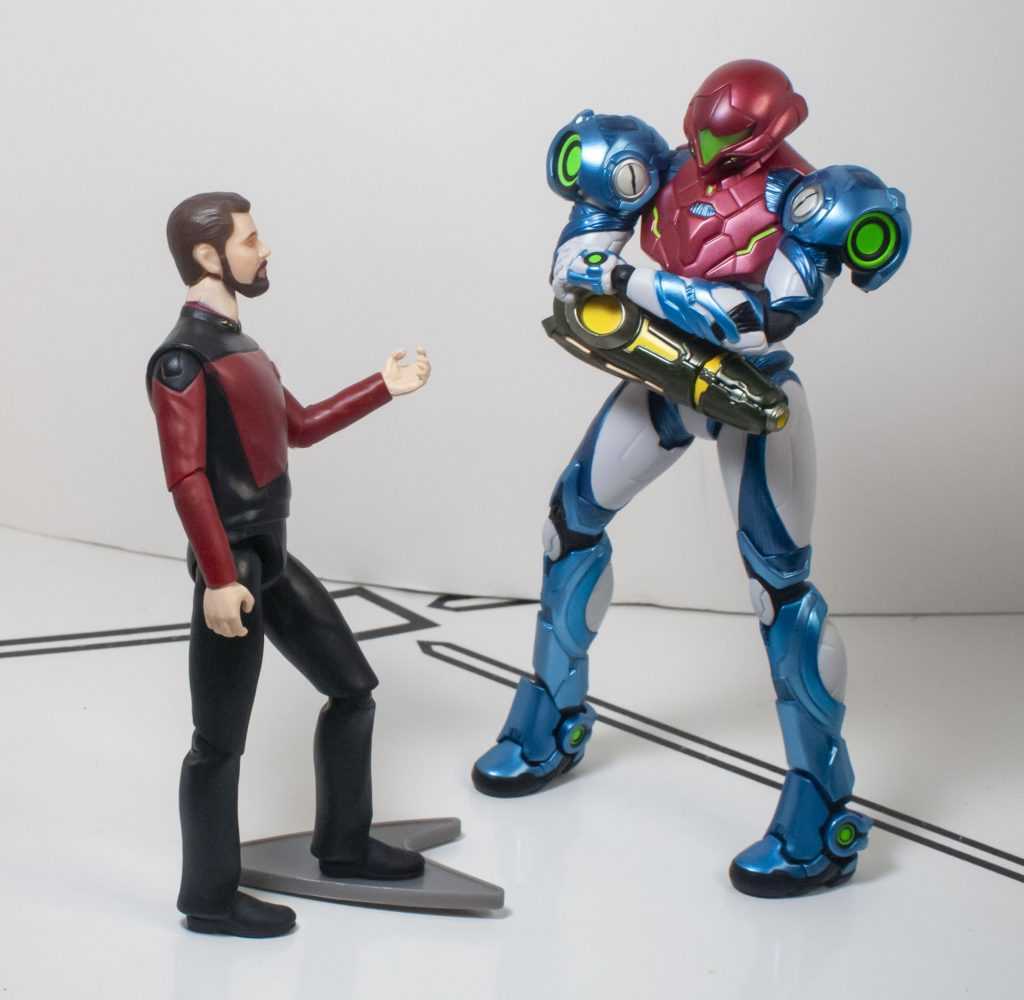
He’s barking up the wrong tree.
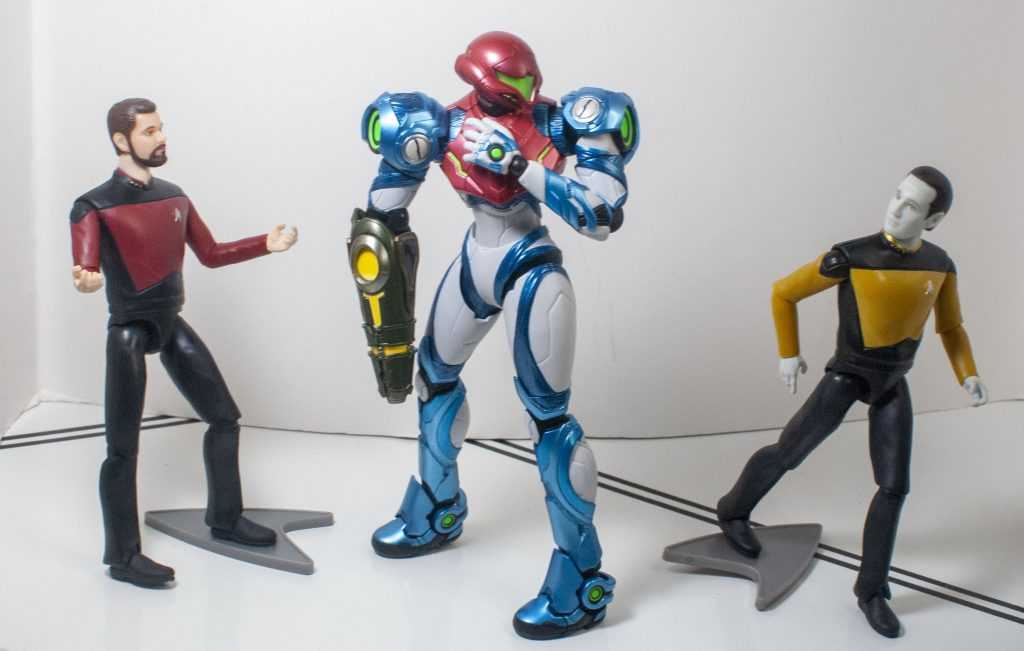
Everyone loves Data.
In terms of design, this is a sleeker, streamlined look for Samus Aran, eschewing her usual bulky suit for something that’s more like an armored bodysuit, making her look far more like the nimble athlete she often is in these games.
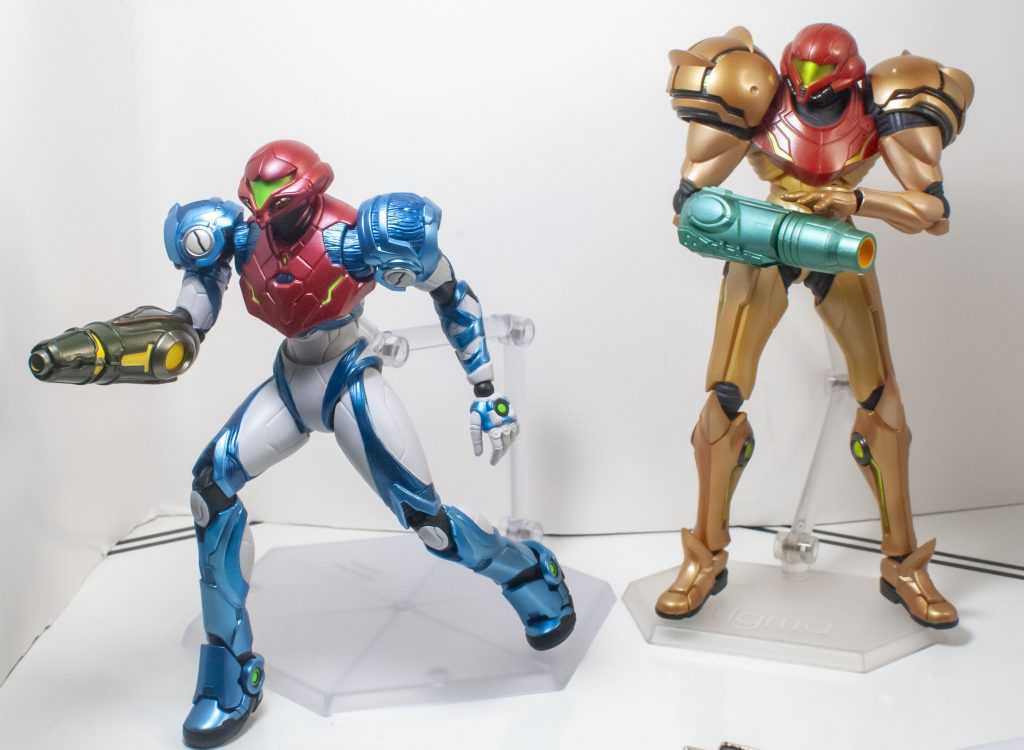
Sacrificing armor for speed.
It’s like what her Metroid: Other M redesign was trying to do, but this time, it’s in a good game.
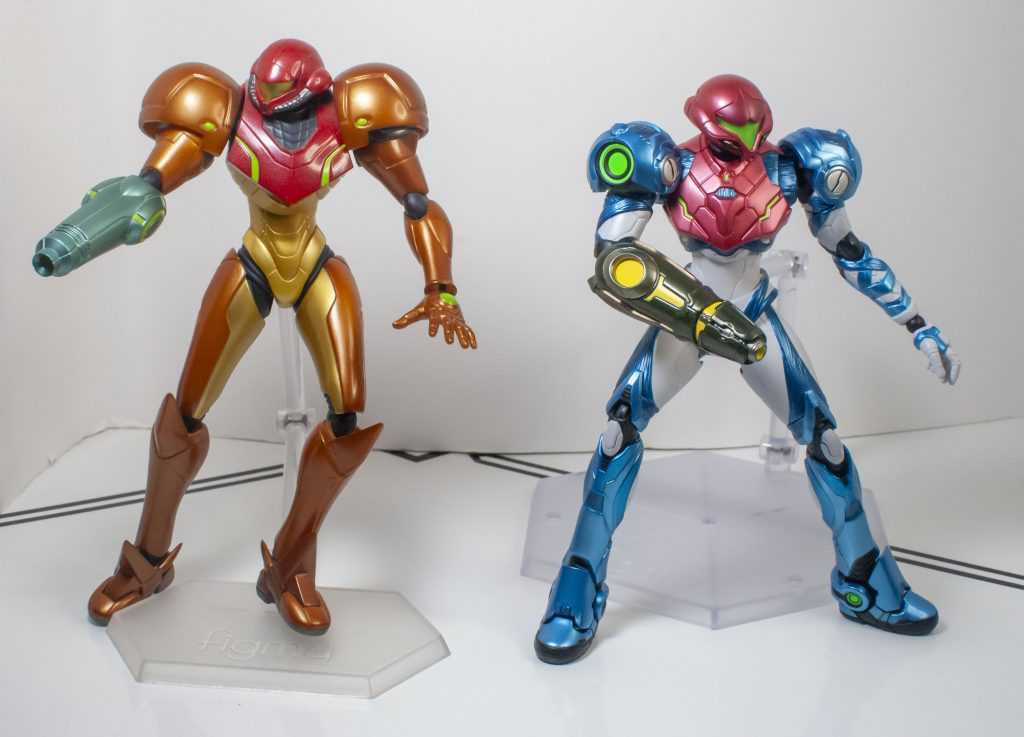
It’s still a good design, though!
Most importantly, her trademark giant shoulder-orbs have been shrunk way down.
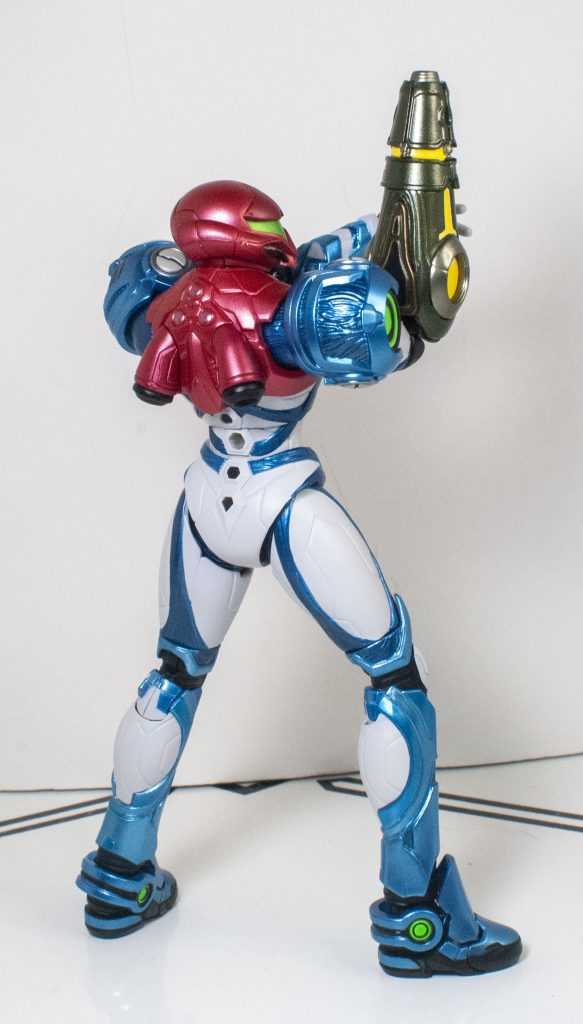
She can actually see over them.
The suit now looks partially organic, thanks to the sculpted texture in between the plates looking almost like muscle tissue covered in technology. It looks like her Metroid Fusion suit with extra armor, which is basically what it is, canonically. I get a kick out of her footwear, too, an oddly bulky set of shoes. They should make a sneaker out of these.

Sneakers, for sneaking.
It’s a good look, and, importantly, it’s very well-rendered here, full of tons of small, sculpted detailing. I will say, the construction of it doesn’t seem made of a bunch of smaller bits of plastic, like the Prime 3 Figma was, it’s a lot more big chunks, but I think that comes down to this suit’s design being less friendly to being built that way. Another thing it’s less friendly towards doing is hiding the joint cuts.
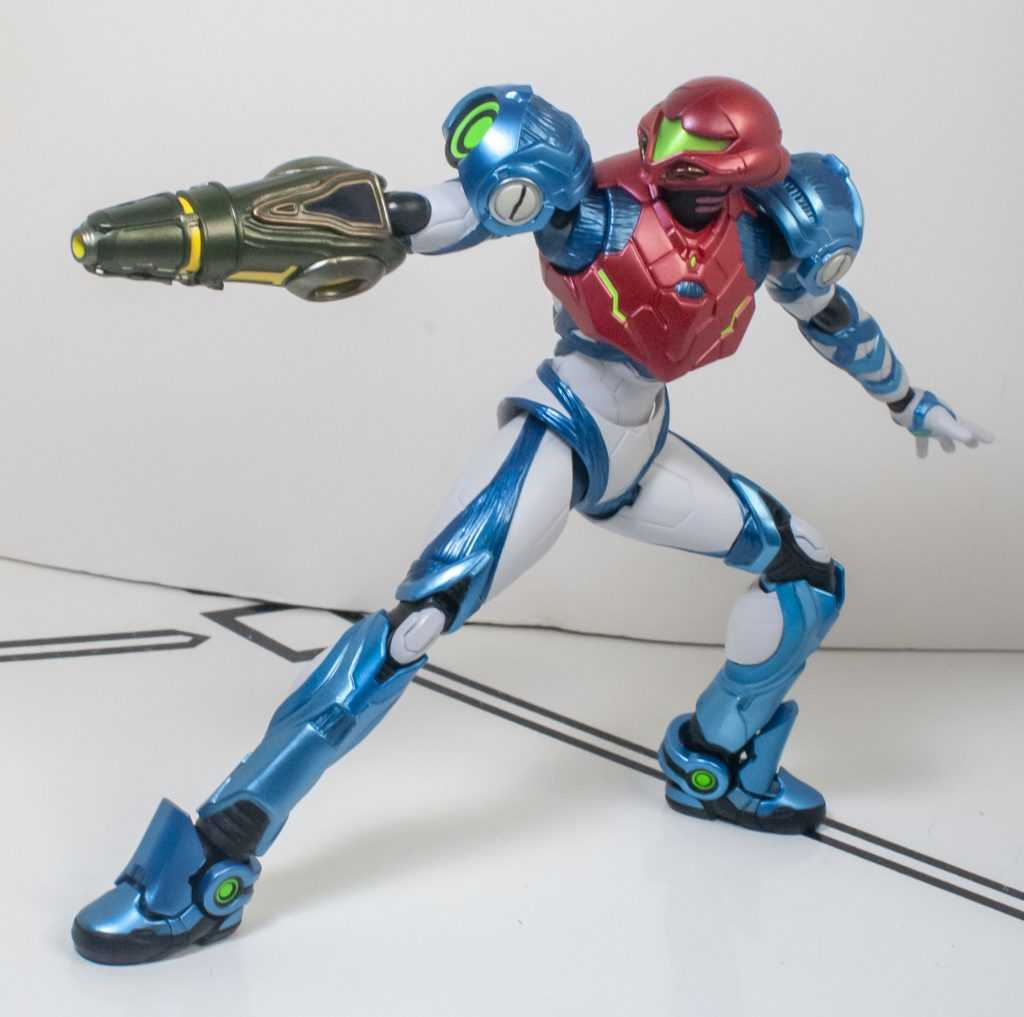
She’ll cut you if you talk about her joints.
Her elbow, and the wrist of her singular hand have obvious, large, black joints on them that aren’t present in her game design, her abdomen is split into chunks of armor instead of being a solid piece, and it’s really easy for her hips to come out of whack in a way that exposes her hollow interior, unless you use her drop hips correctly (more on that later).
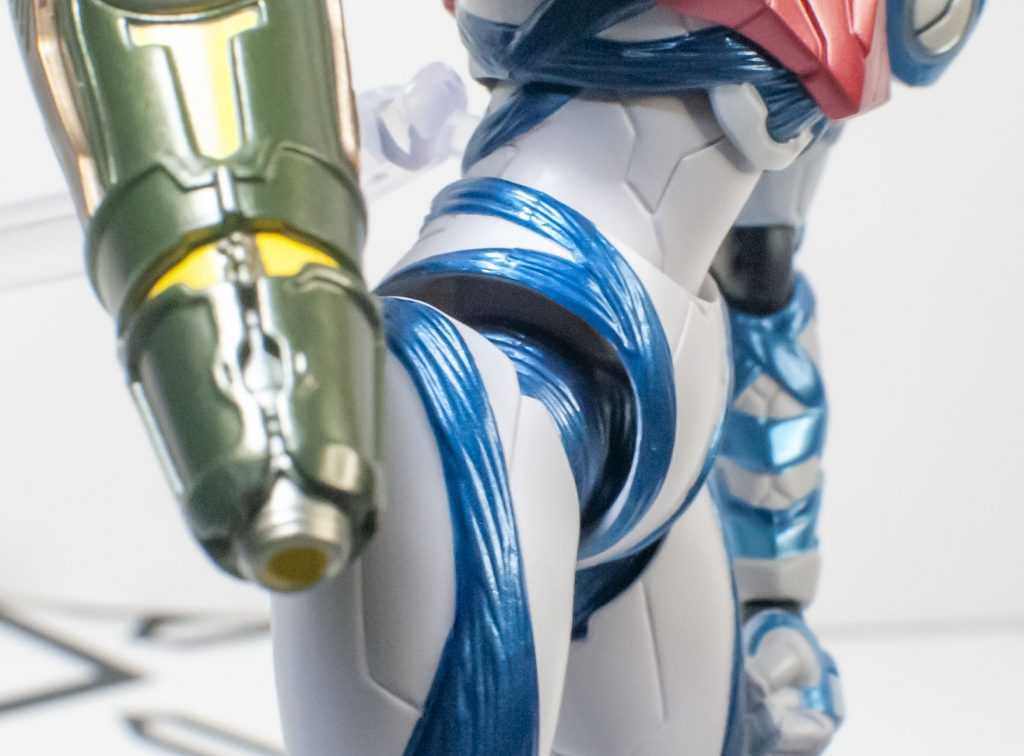
How they look if you don’t line them up correctly.
Still, by the standards of most action figures, this is all really minor stuff, and it’s only the exquisiteness of the rest of the sculpt that draws my eye to them. It’s even making me see details on the suit that I didn’t notice in the game, like her oddly detailed neck joint.
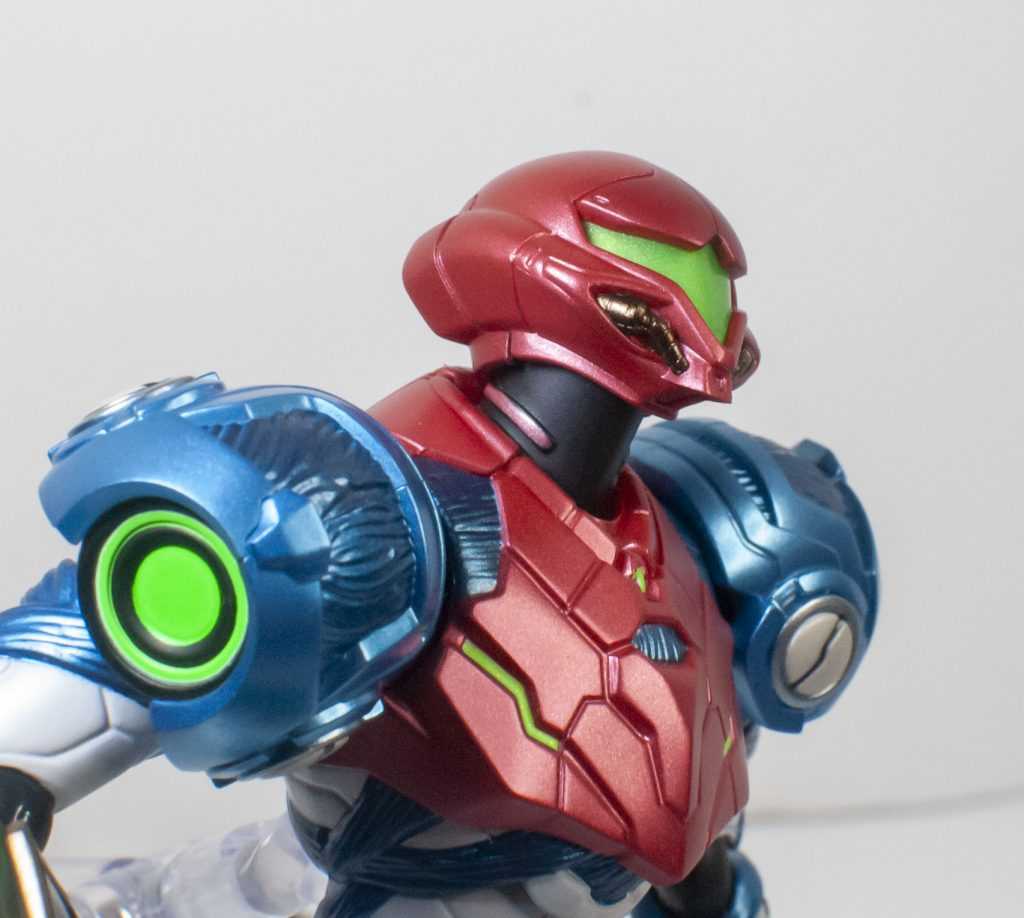
Protect it!
It’s also making me notice that when viewed in profile, her helmet looks kind of like a bird’s head, which is really fitting, considering she was raised, trained, and equipped by a race of giant bird people.
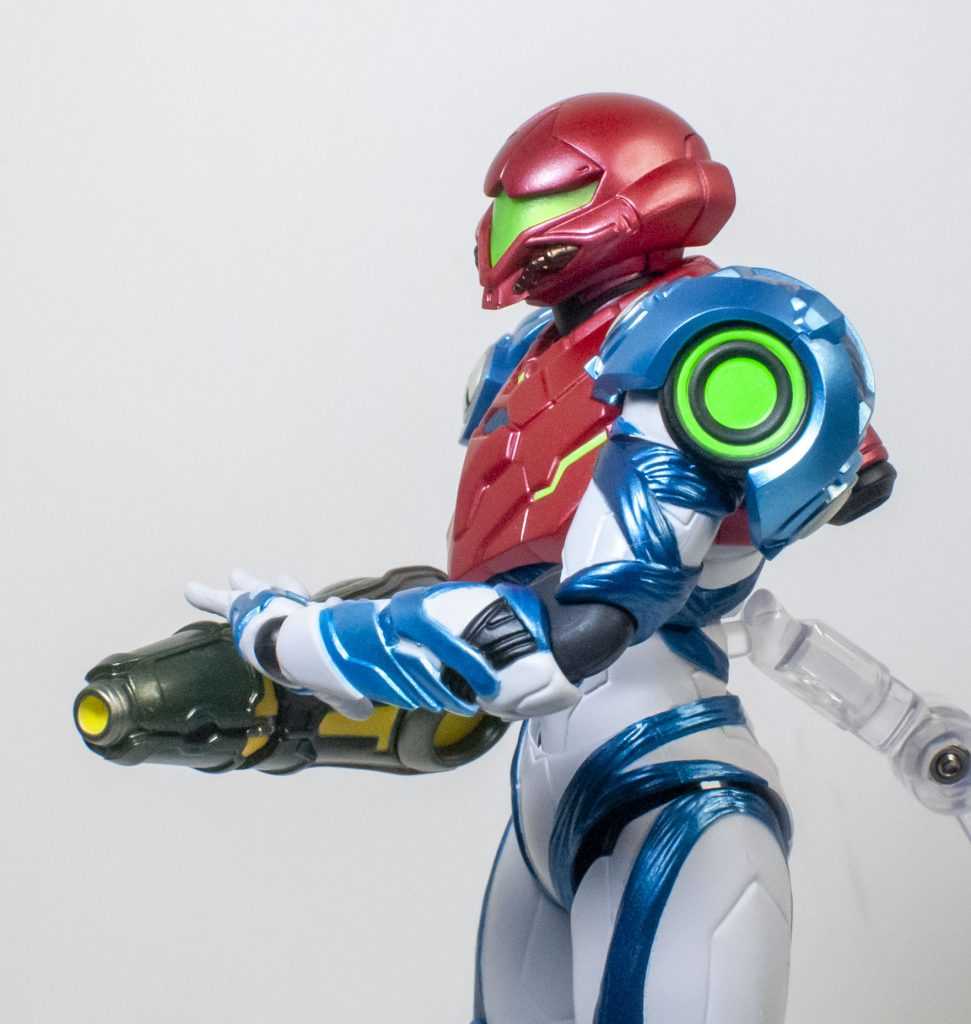
*Chozo elevator music plays.*
Speaking of that, I love the more angular visor and helmet, and how it’s rendered here. Like the last couple of (armored) Samus Figmas, they opted to make her visor opaque, and not show her eyes underneath, but she spent most of the game with them not visible this time, anyway.
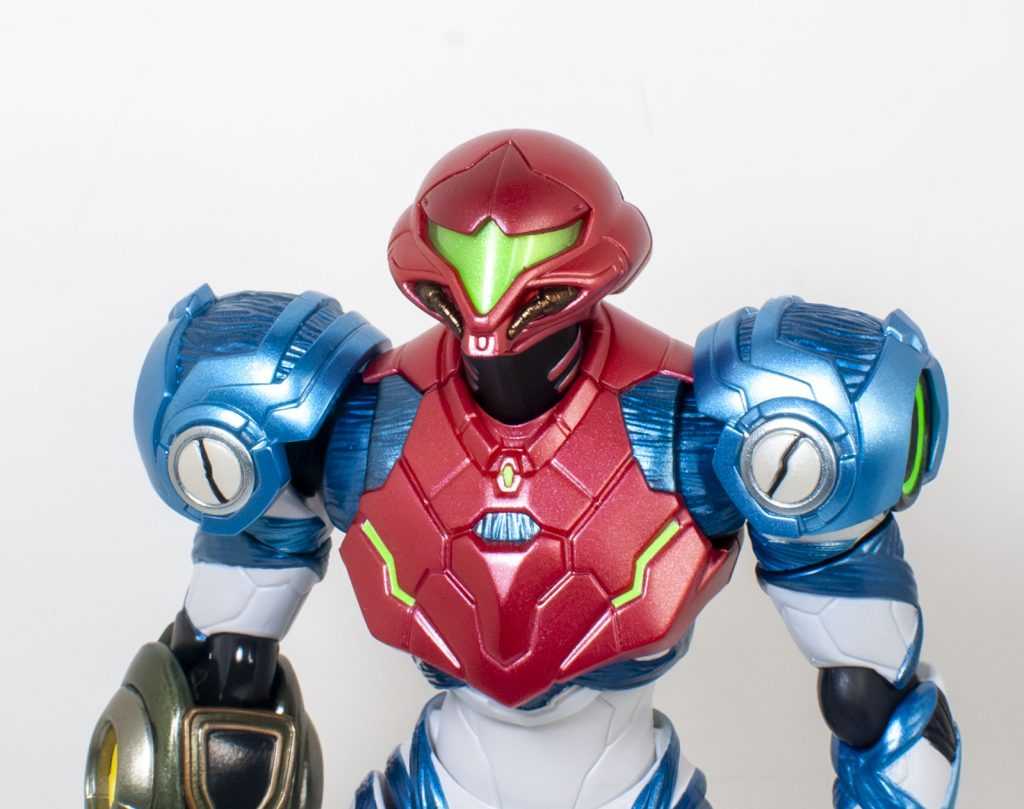
Right before one of the game’s big moments.
Importantly, this is a figure that communicates Samus’s character very well. Metroid Dread’s cutscenes were praised for showing a lot of her personality through simple body language, and that sense of personality came through here.

Even when the character was busy getting owned.
The Colors
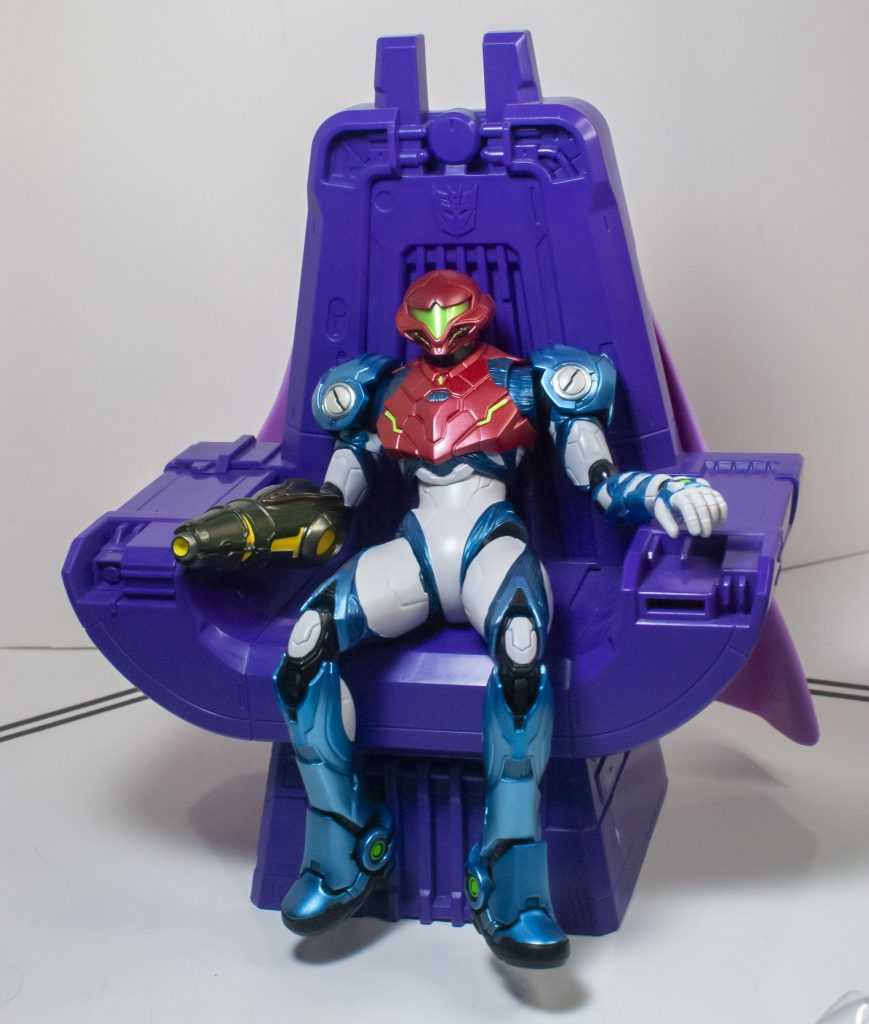
She pops nicely against the purple.
I mentioned above how the Prime 3 Samus Figma was made out of a lot of smaller, connected plastic parts, and one advantage to that approach was it let a lot of her coloration be plastic colors, and not paint. Dread Samus’s more solid design means a lot more of her colors come down to paint. Fortunately, it’s really good paint, with nary a smudge, scratch, or missaplication in sight.
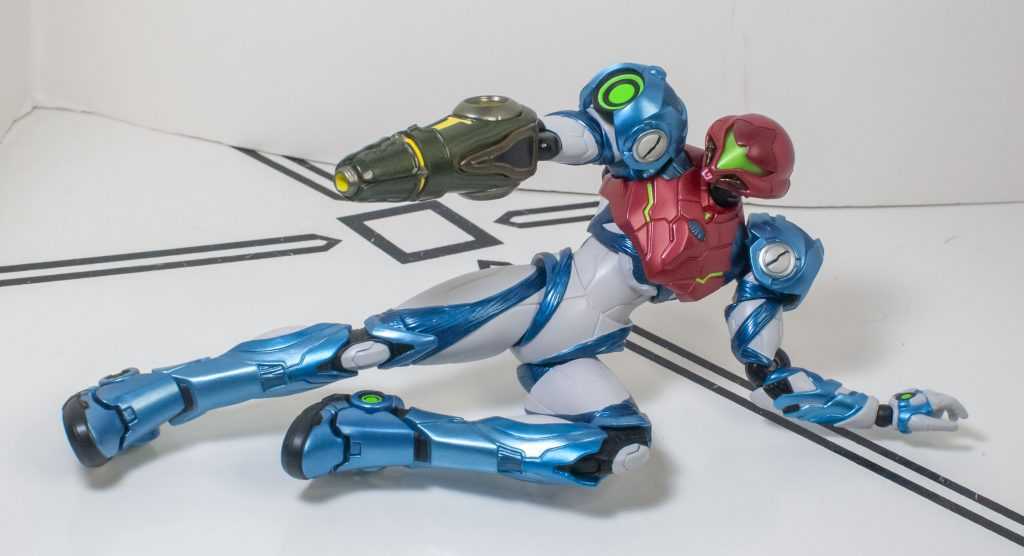
I shudder to think what would happen if I actually slid her across the floor, though.
She’s primarily a mixture of metallic blue, and flat white, and I think she’s a mix of blue parts painted white, and white parts painted blue, but it’s matched so well, that I can’t tell. Meanwhile, she’s got a nice metallic red on her helmet and upper torso, a translucent green visor, bits of neon green on her shoulders, feet, hand, and other places, and a gun arm in darker metallic green, with glowing eddies of yellow light on the sides and in the tip that point to her using her Power Beam, her starting weapon in the game.
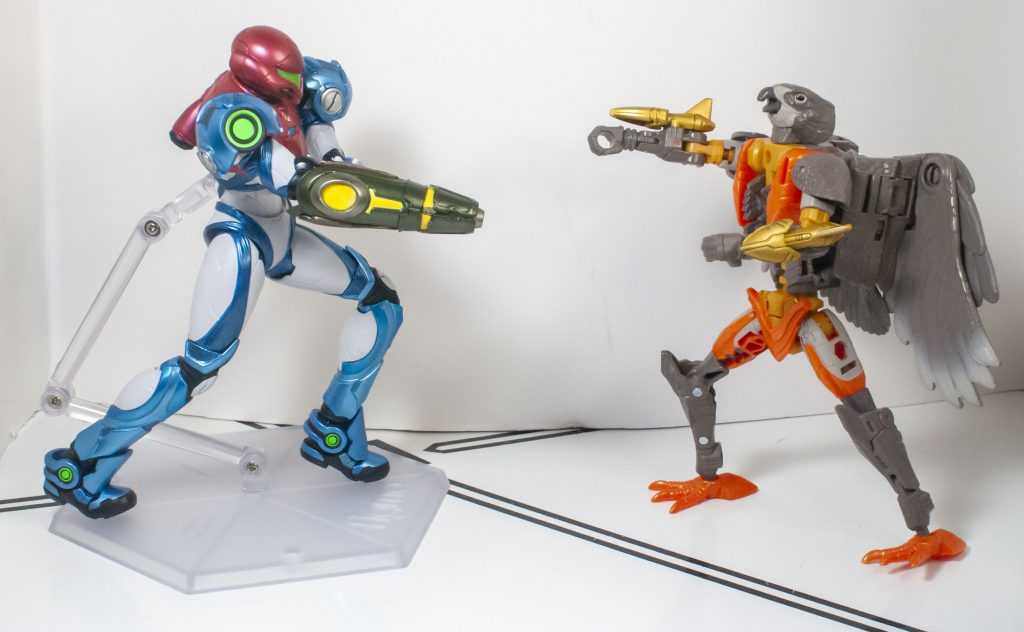
She’s really underpowered for this fight.
It’s very lush, very complete-feeling (I forgot to mention the bits of silver and black! There’s probably more!), and I appreciate how shiny and metallic a lot of her deco is.
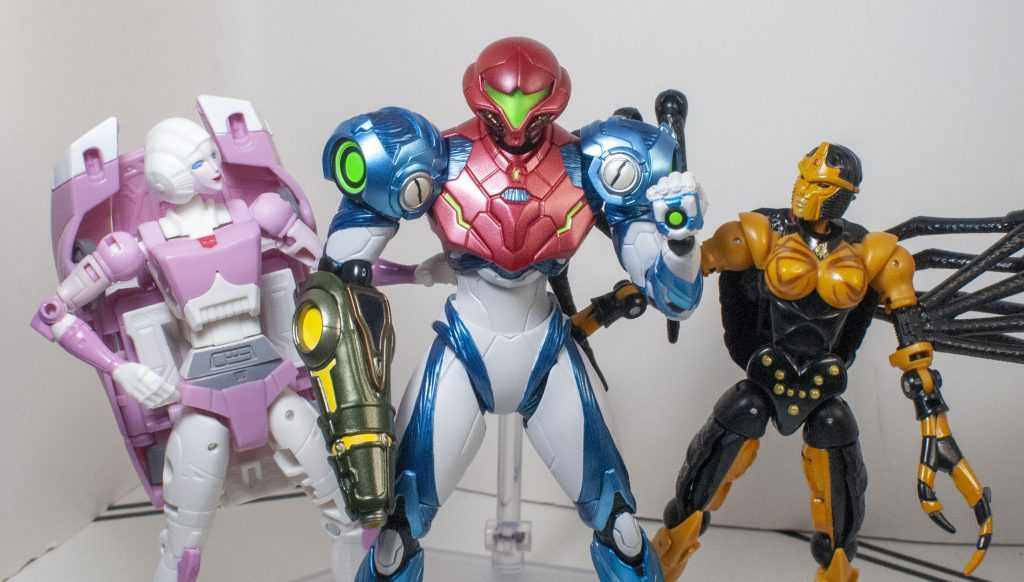
“Go for it, Samus!” “You’re our hero!”
Build Quality
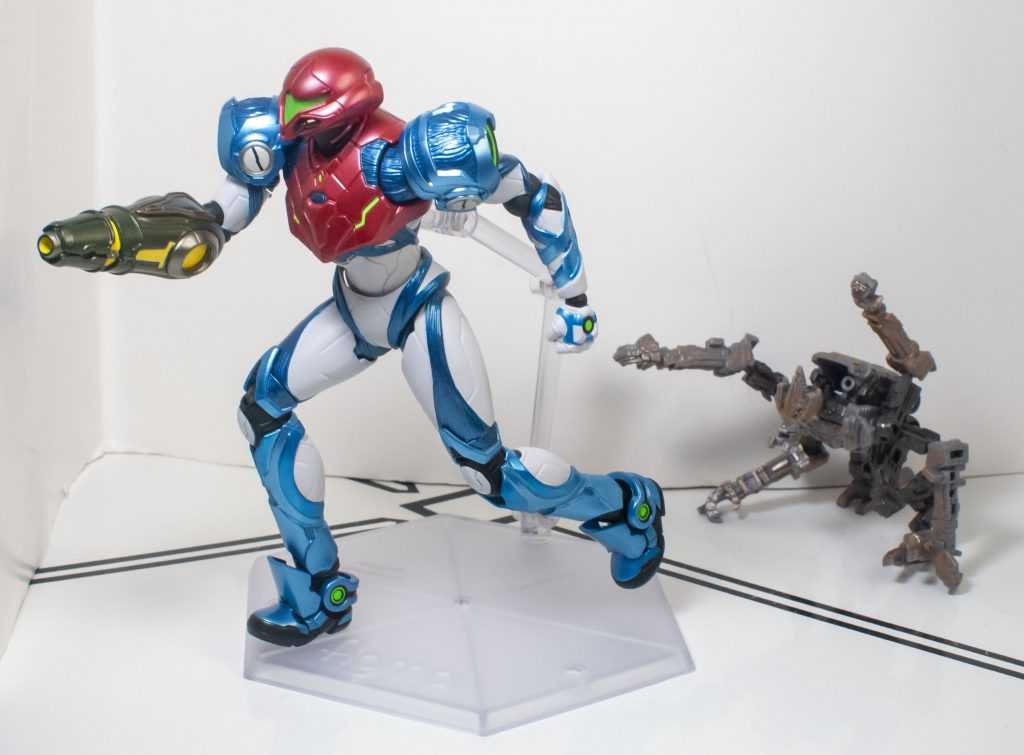
*EMMI chase music plays*
On what I consider the scale from fragile to solid, we’re somewhere in the middle. On one hand, Samus doesn’t have the toyetic, knockaround solidity of an SH Figuarts, like Kamen Rider Zero-One, which I consider the gold standard of “this is still a toy you can play with and throw around a bit,” or a Hasbro 6-incher.
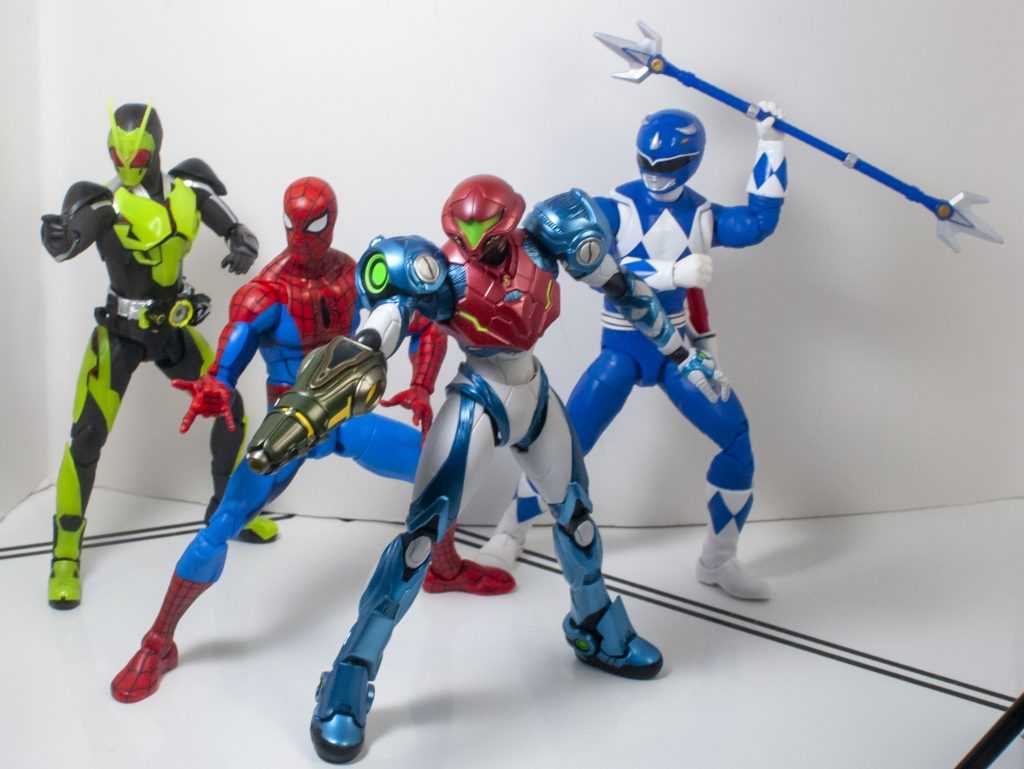
My spread of 6-inch figures has certainly gotten interesting.
But, luckily, we’re also not in the “if you look at this the wrong way, parts are snapping off” territory of, say, NECA stuff, or some of the more fragile-feeling Figmas I’ve handled (there’s a reason why I stopped collecting the Splatoon ones after the Inkling Girls).

After a “wait, why am i running?” moment.
I will say, this Samus feels a bit less durable and playable than the Prime 3 one, but I think that’s mostly down to how much of her is covered in paint this time around. In fact, she comes with an instruction manual that actually warns about paint rub around her torso and knees if you move some of her joints too far, and the possibility of breaking some of her joints if you remove her swappable parts too roughly.
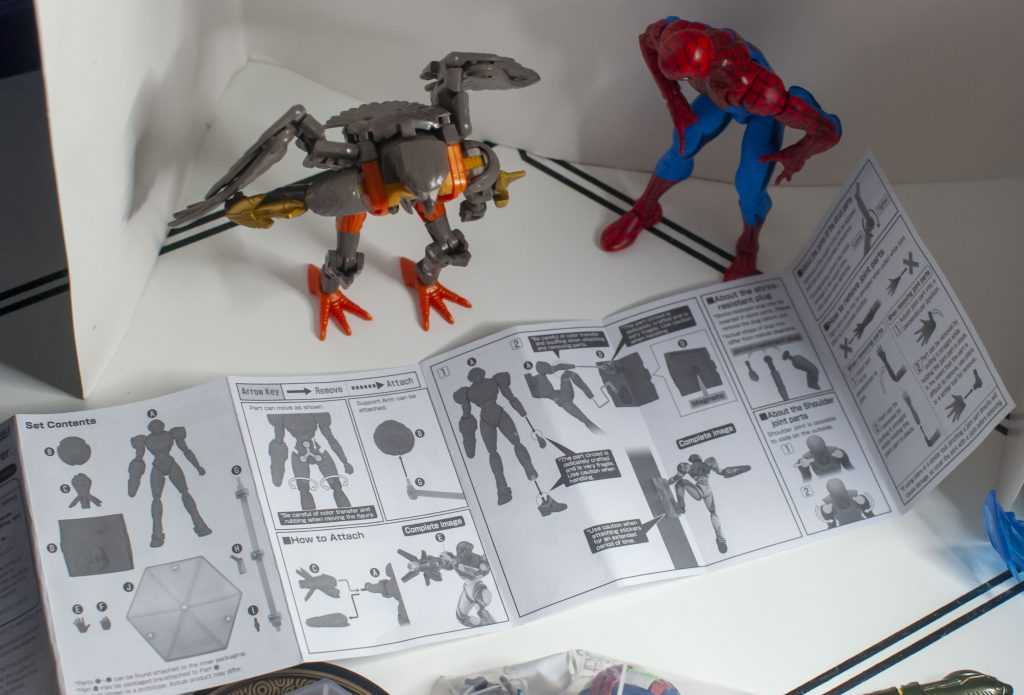
Checking for weaknesses.
On the other hand, I don’t think she actually feels that breakable and scratchable, and the manual almost feels more like they’re just covering their bases. You can still pick up and pose this without worry, and nothing feels like it’s going to break, you just might have an adrenaline rush if she takes a tumble off the shelf.
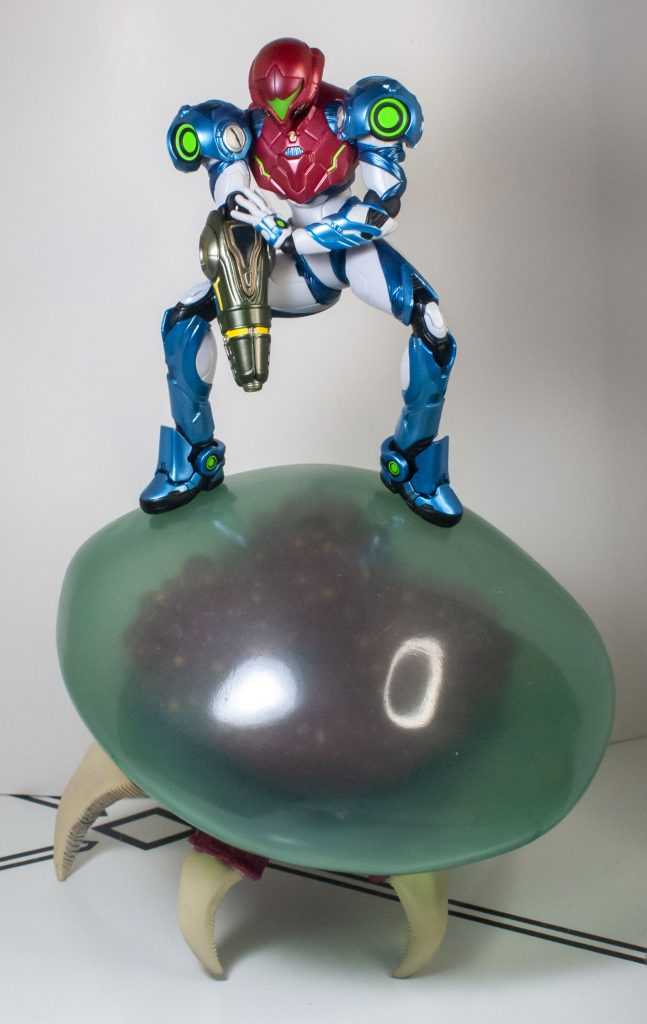
Gonna be real, I sweated a bit balancing this.
In terms of stability, she’s more than capable of standing unassisted, but it’s not something I test too often, because she has that all-important figure stand that all Figmas come with, which, cleverly, slots into a hole that’s a natural part of the detailing of her robotic “spine” on her back, a clever solution to not breaking up the sculpt, something that happened on the previous Figma.
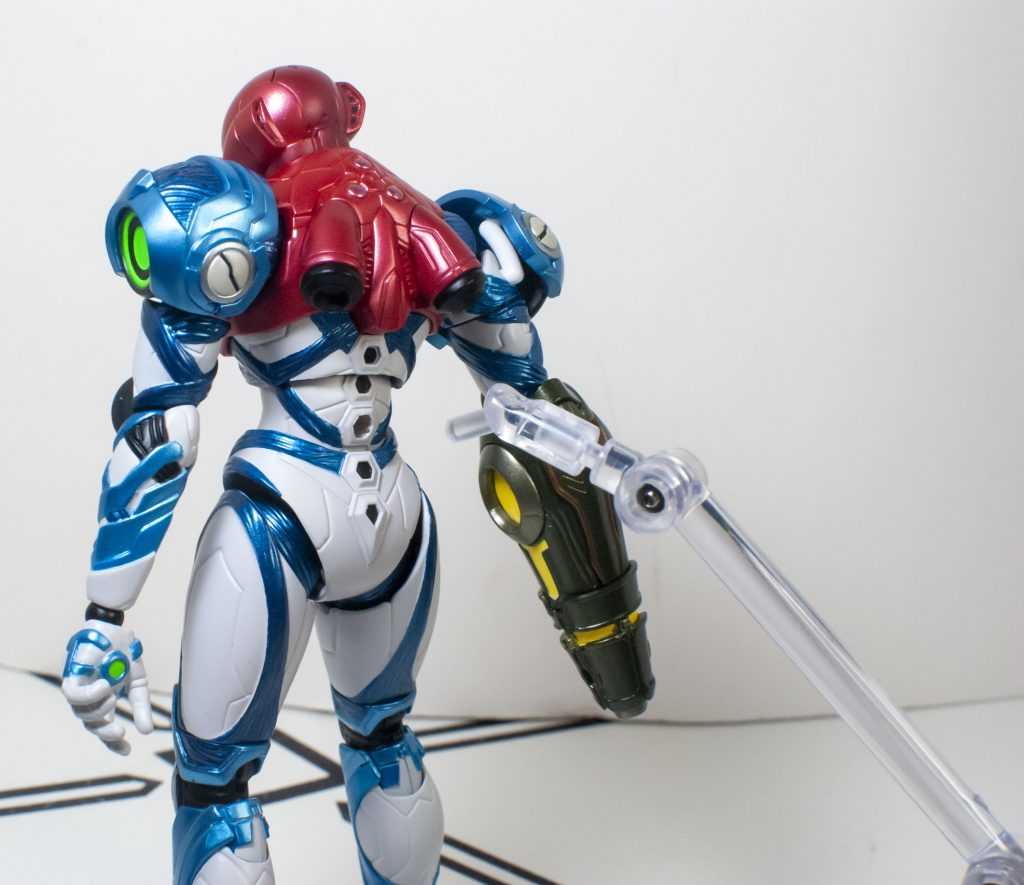
It’s unintentionally kinda cyberpunk.
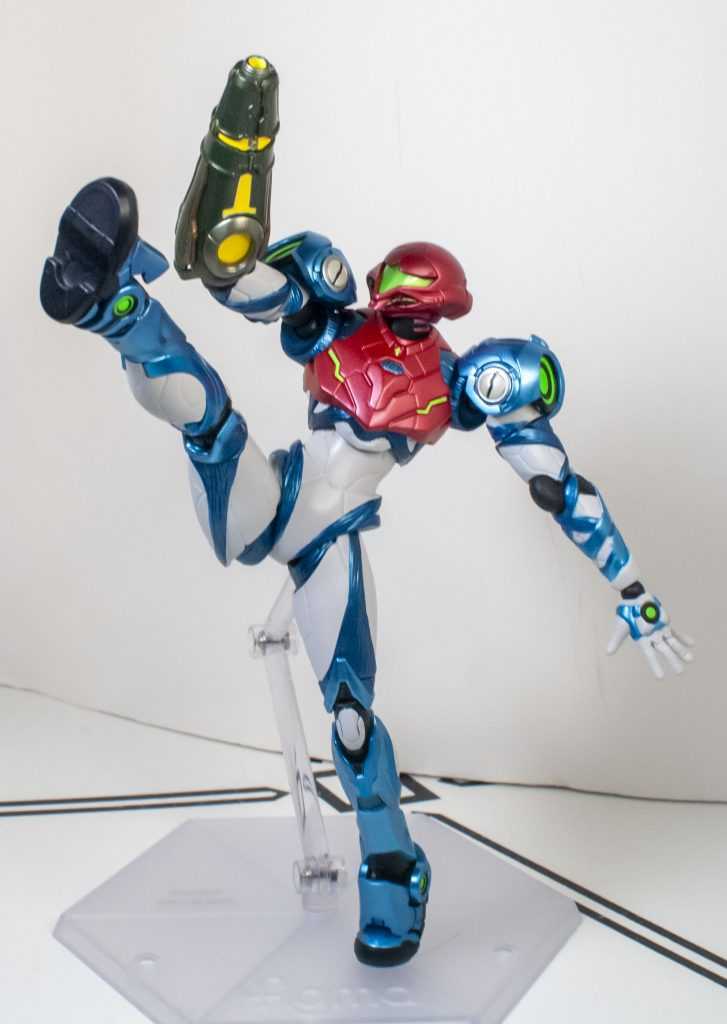
Flagrantly cheating at my “can the figure do a one-legged kick?” test.
But here’s where one durability issue actually has appeared: The stand has a curved head that you plug into the end, and I’ve noticed cracks and stress marks clearly forming on the base of it, somehow.
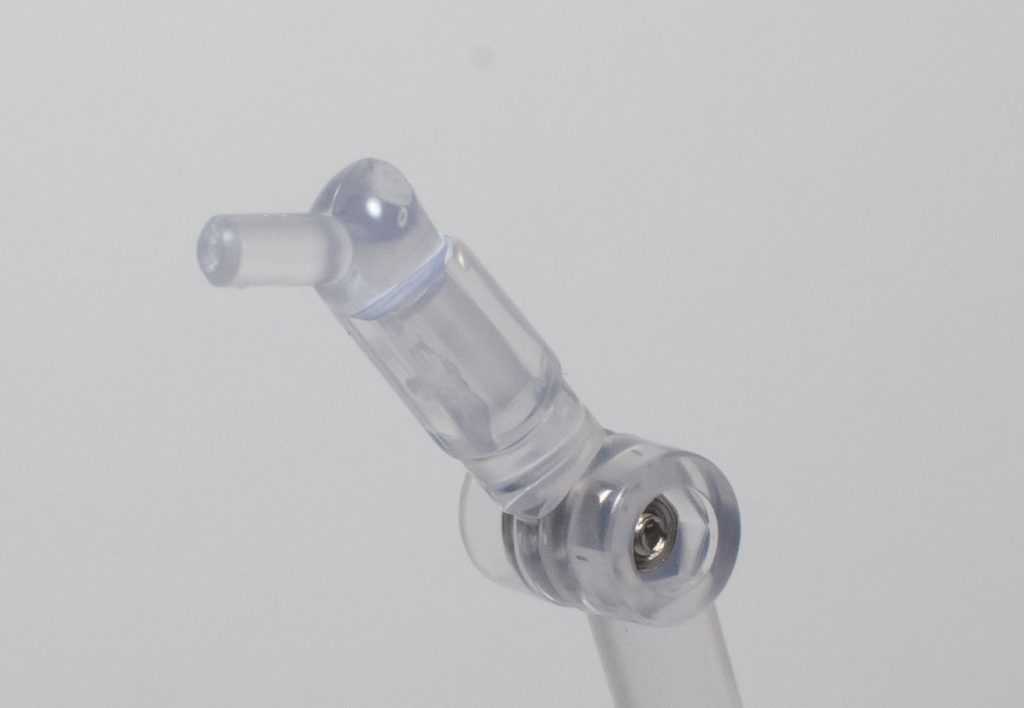
It’s kind of hard to photograph, but it’s on the segment above the screwed-in bit.
I’m not really sure if it’s an issue, since it’s not the part of the piece that’s load-bearing, but I am keeping an eye on it, and it’s a bit distressing, considering how well-engineered these usually are.
Articulation
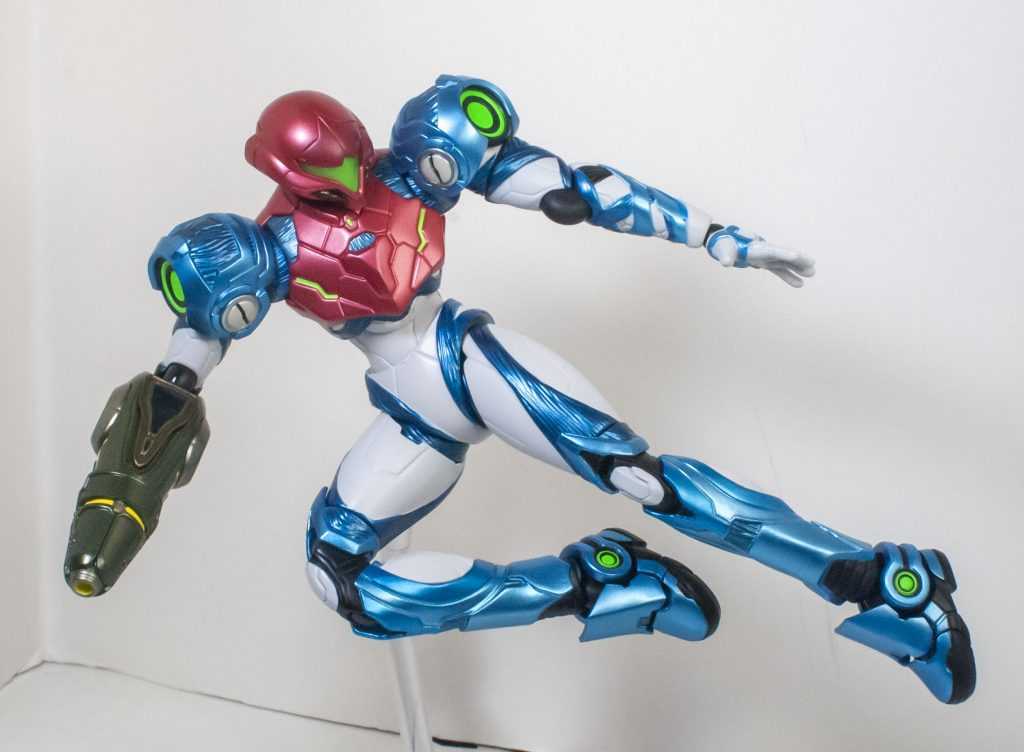
The obligatory Rider Kick.
This is an important selling feature of a figure like this, and Samus definitely delivers. I think she has the exact same jointage as the Prime 3 version, which is to say, a ton of it, too much to think of listing out here. I think the key, important thing for an athletic figure like this isn’t necessarily the amount of joints (though they are extensive), but the range of them, which is also extensive. All the important ones are double-joints. Double elbows, double knees, a double-neck, a double ab crunch, it goes on and on.

It lets you do stuff like this.
One thing I’d say she does lack is the fold-away armor that Prime 3 Samus had on her abdomen and thighs, to help it get out of the way of her as she was posing, but this more streamlined design mostly doesn’t need that (she does have some on her shoes, though).
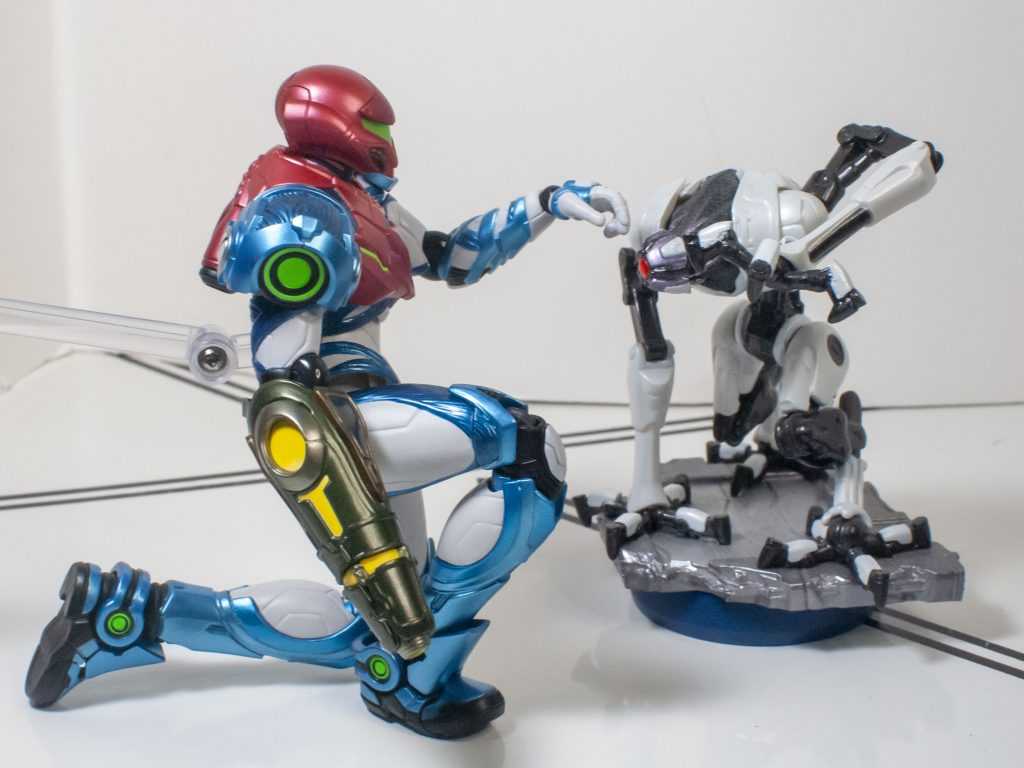
*poke*
I’d mentioned before that it’s easy for her hip joints to end up looking wonky, and that’s because she has “drop hips,” where you can pull them downwards slightly to allow them a better range of motion when you’re doing more extreme poses. It’s a good idea, but in practice, I probably spend more time pushing them upwards so that they won’t look odd.
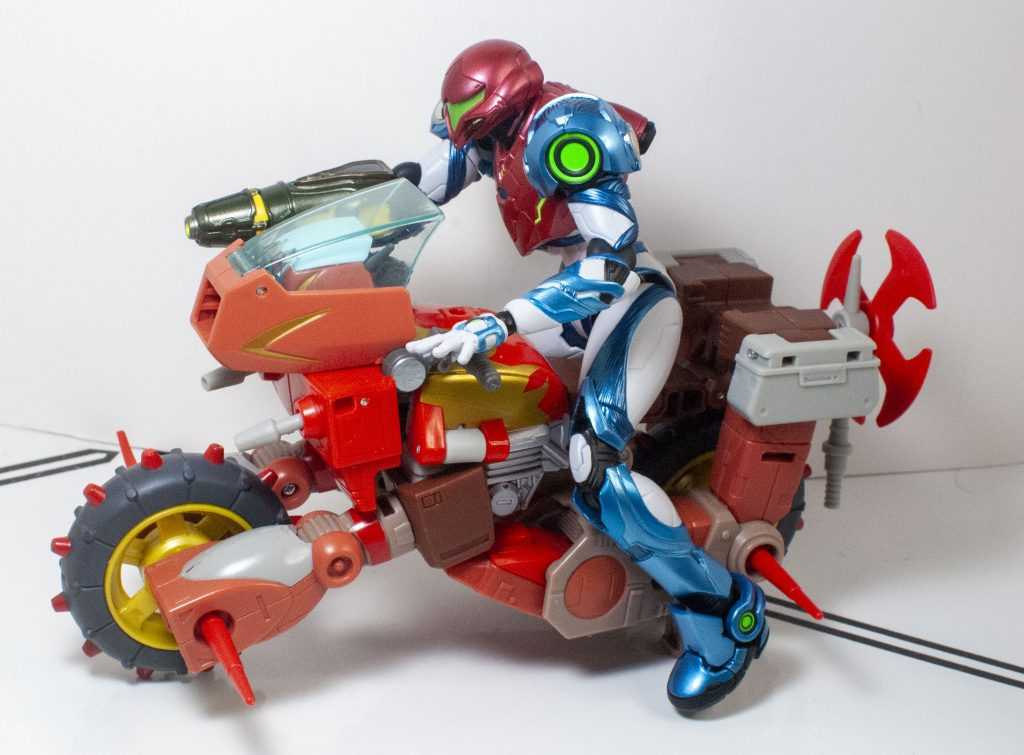
Time for a speedrun.
On a more interesting note, every single Samus figure I’ve owned continues to handle her challenge of articulating her oddly-shaped shoulders differently. This time around, the big, round orbs are actually hollow shells on struts that just kind of hover over her upper arms, with normal shoulder joints hiding underneath.
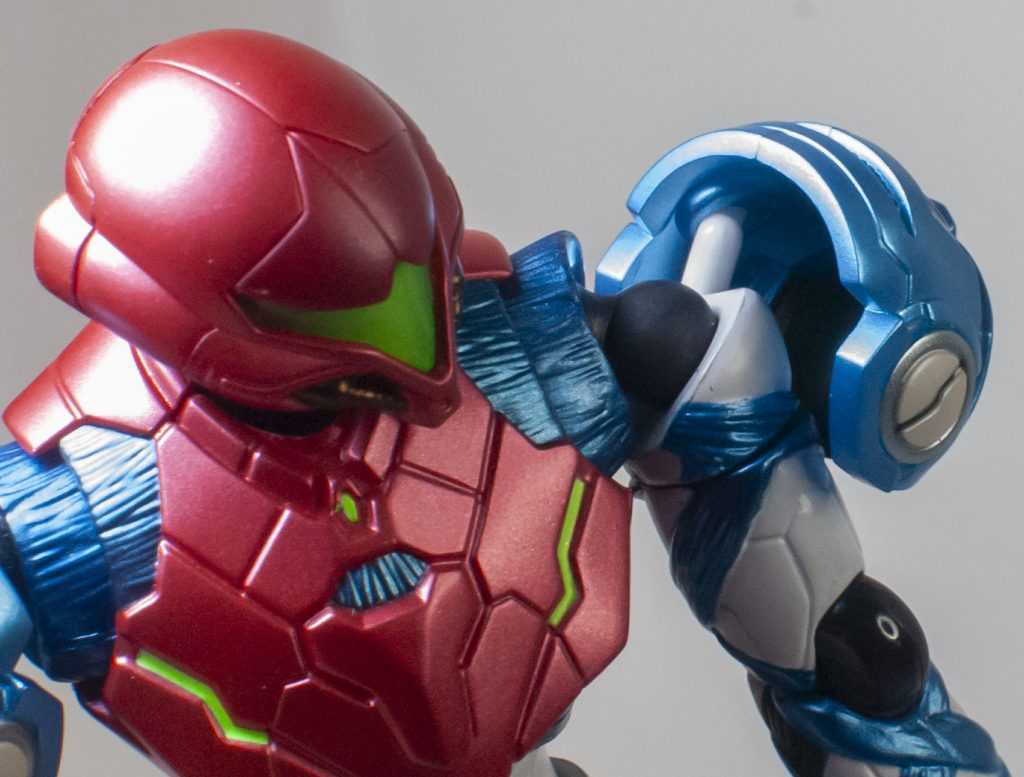
A peek behind the curtain.
This is a great solution mechanically, though when bending her arm, they often come away from the shoulder, and need to be re-affixed over top of them. And the instructions reveal that you’re also able to yank the shoulder joints a little bit out of her torso, to help with poses that involve folding her arms.
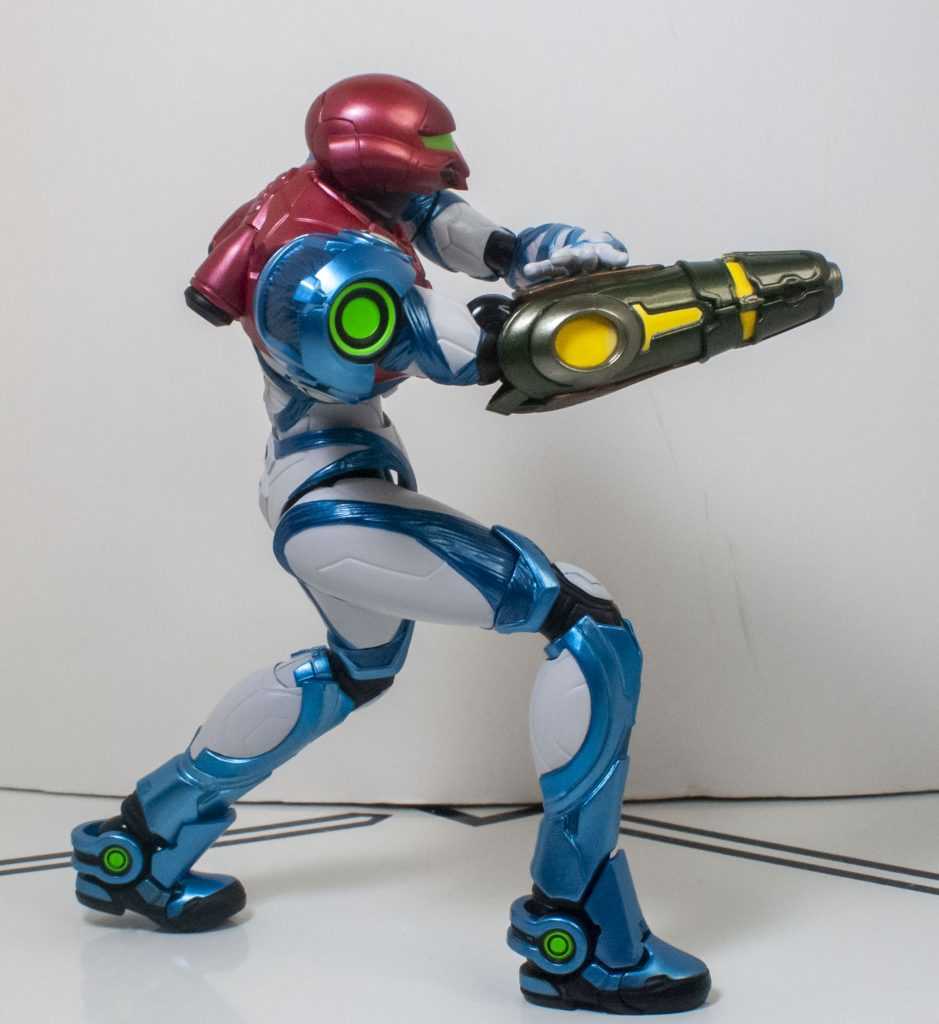
Like this one.
Bottom line, though, she’s incredibly bendable, in ways that compliment her streamlined suit. Again, Metroid Dread gave Samus a ton of suit-acted personality, so it’s wonderfully appropriate that the Figma has the articulation to similarly emote.
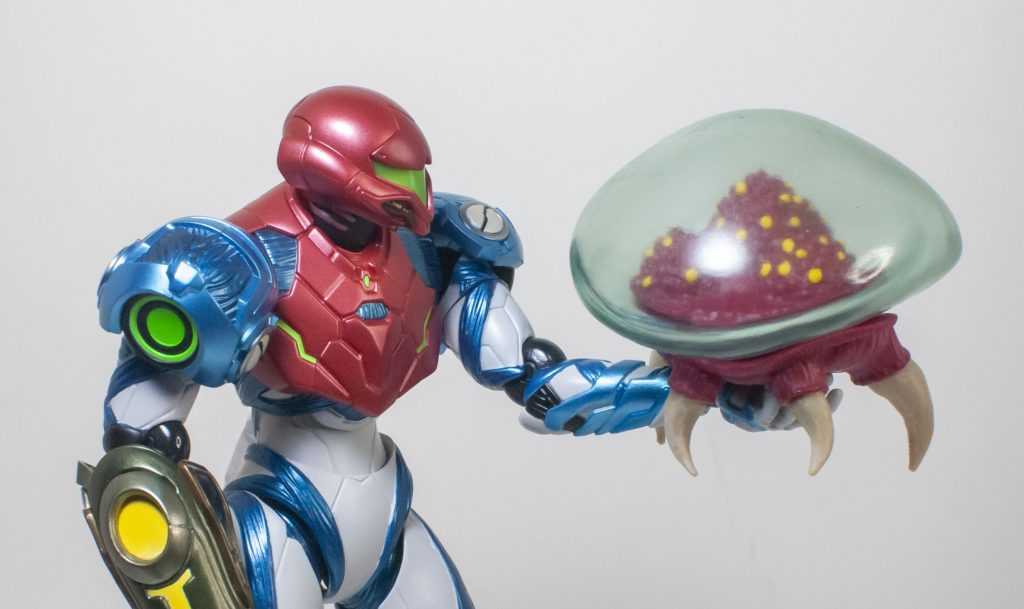
A newfound kinship.
Accessories
I’ve often talked about the push-and-pull when it comes to accessories on high-end figures, where I think too many just inflate the price and don’t really get used, while too few feels like a missed opportunity. Here, there’s a near-perfect amount, a bit more than the last Samus Figma, and they all see use of some kind by me.
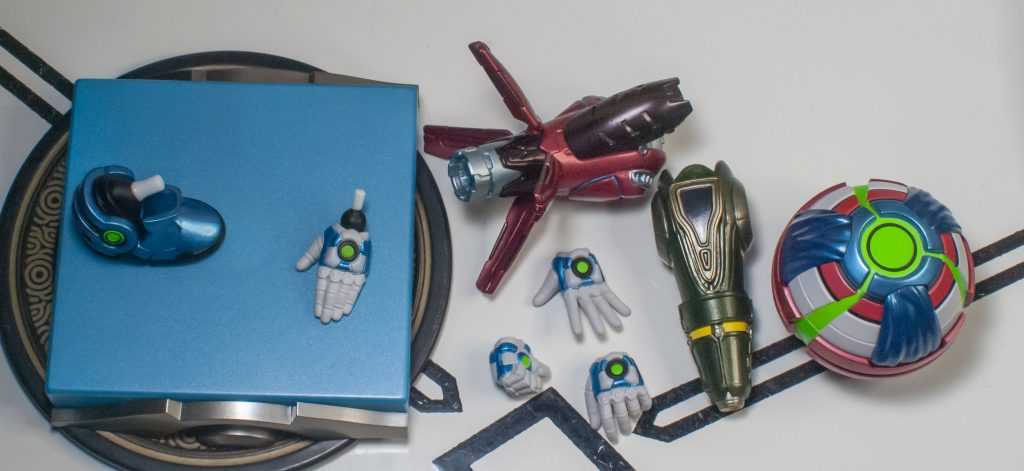
The full spread, minus the stand.
Dread Samus comes with three swappable hands: First, a fist.

Real recognize real.
Next, there’s a hand that’s open, but with her fingers curled.

No purple glow, sadly.
It’s the hand she looks at when certain late-game things start happening to her, though she was in a different suit at that point. But it’s also good for gesturing, or touching things.
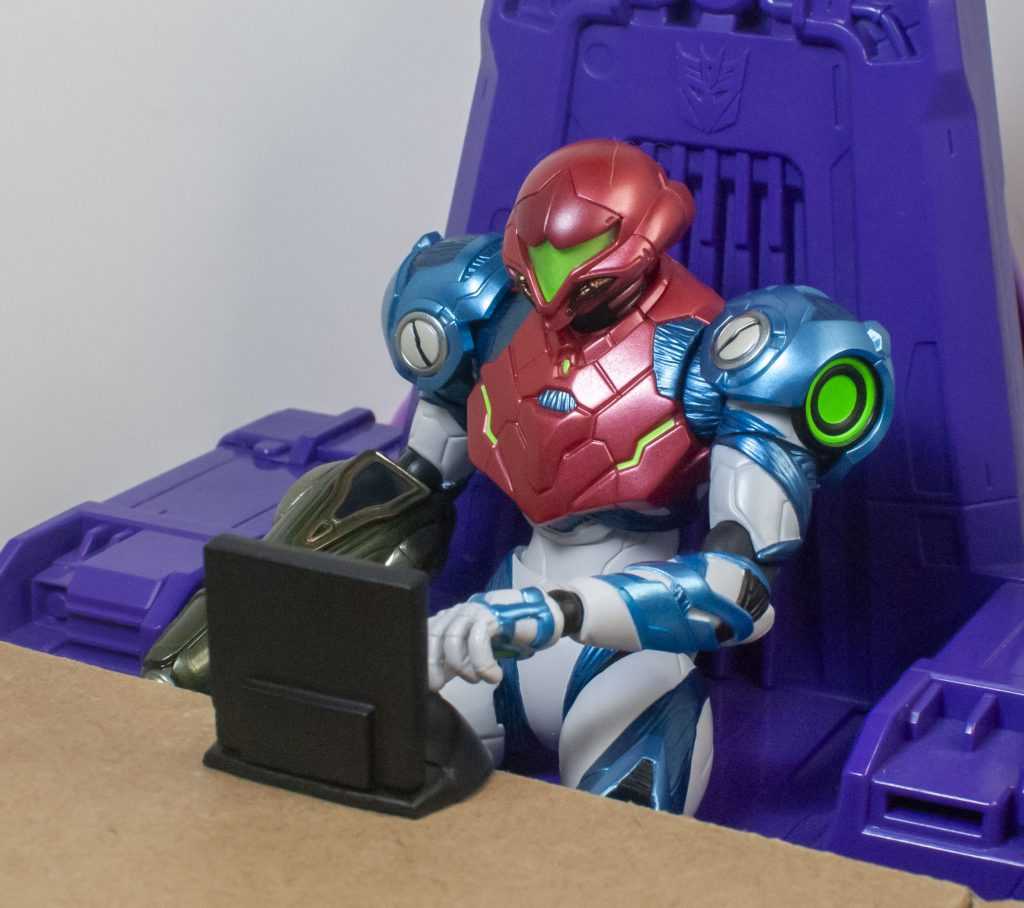
*tappa tappa tappa*

“You’re supposed to shoot through the roof! It’s really obvious! This man’s a game designer?”
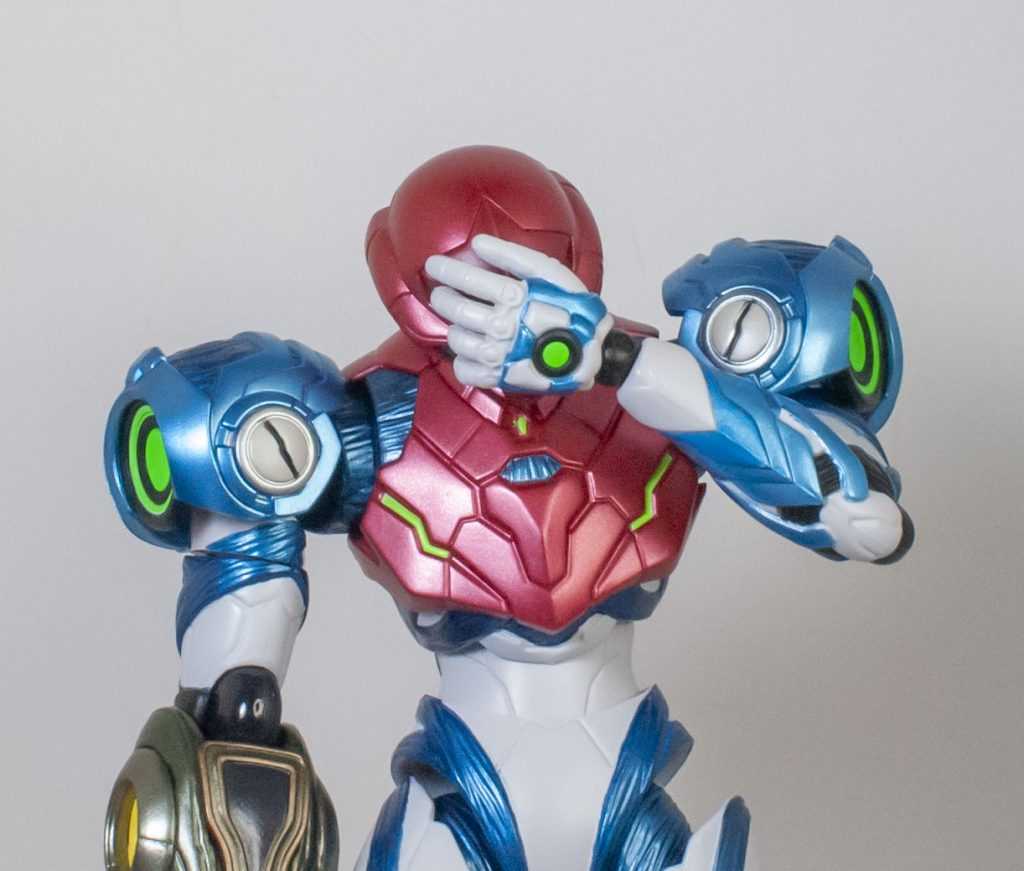
She’s still thinking about it.
Finally, she’s got a full open-palmed hand, for grabbing her arm cannon (a gesture she always does to steady it), or anything else you can think of an open-palmed hand doing.

Like DANCING!
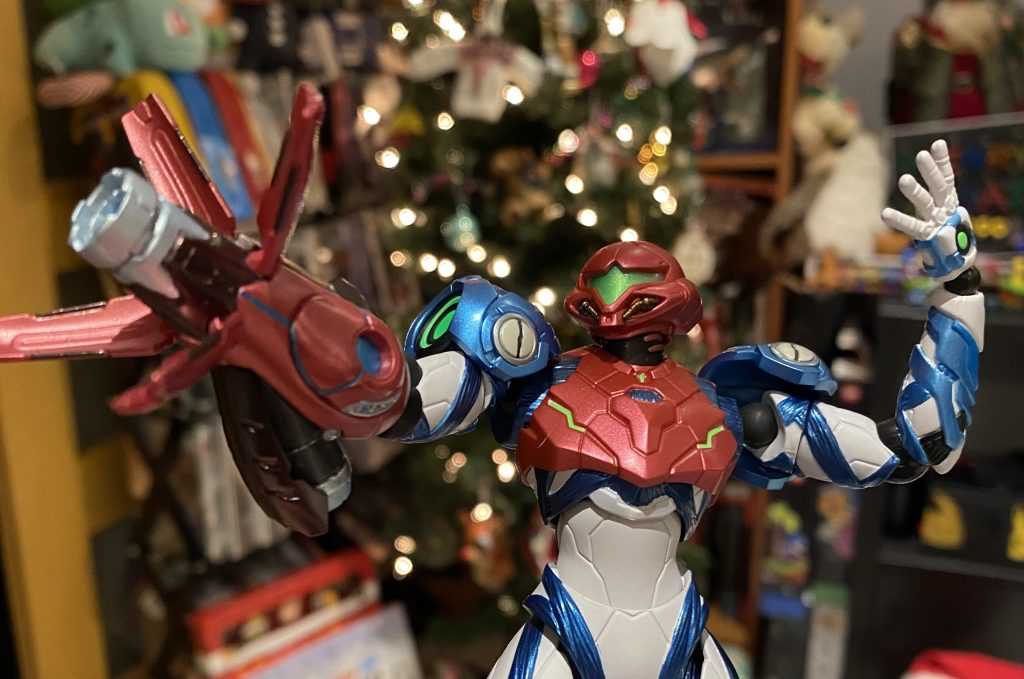
Or being dramatic. While defending Christmas. In late January. Look, this is an older photo.
I kind of wish she still had a Thumbs Up hand, like the Prime 3 and Other M ones do, but to be fair, that’s not something she did in this game (she was having a rougher time, clearly). Also, swapping hands is a bit odd. Unlike her previous Figmas, you’re not supposed to remove the black wrist joint the hand’s mounted on with the hand, but instead leave it in there, to avoid breaking it, according to the instructions, which also recommend bending the joint sideways to give you leverage to pop the hand off. I don’t know that this caution is really necessary (none of my copies of the previous releases have had any trouble with that joint breaking), but I’ll follow those instructions, especially considering each hand doesn’t have its own joint now, and there’s just a single spare one in the box.
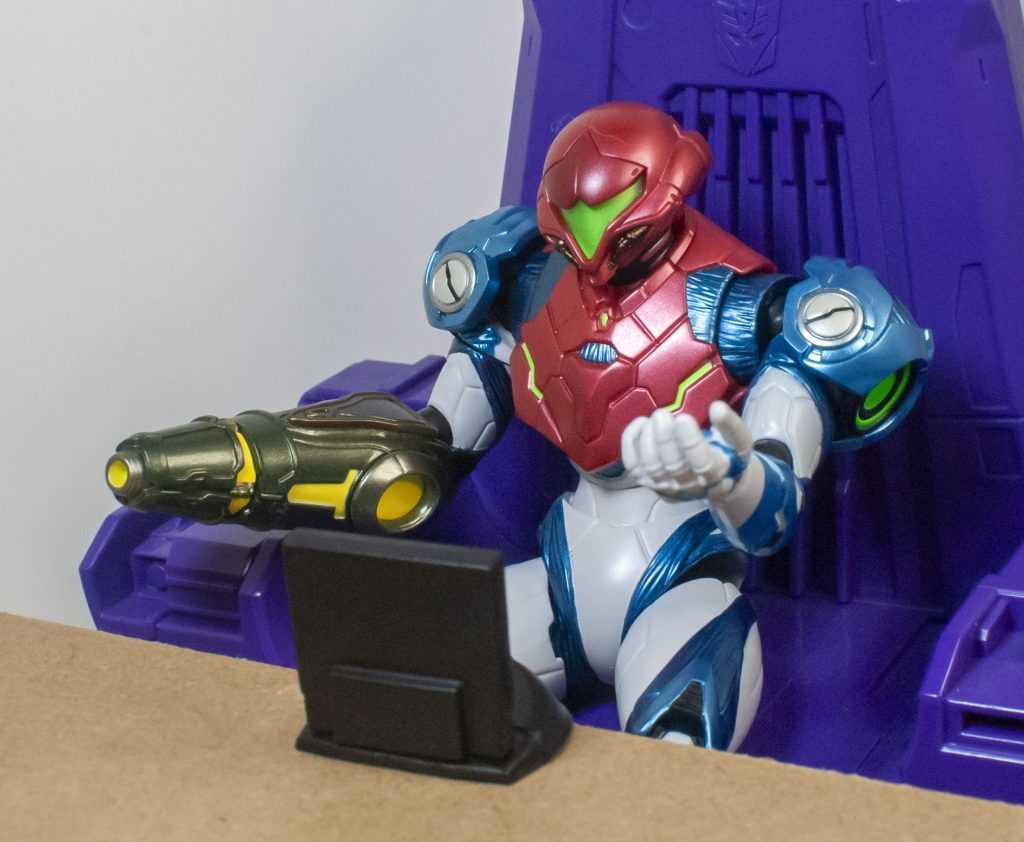
She really needs to log off.
Next, there’s an entire replacement arm cannon, one that’s much easier to remove from the elbow joint, even if you sometimes end up popping her bicep swivel out instead (it pops right back in). Her second arm weapon is the Omega Cannon, a temporary powerup she sometimes acquires that lets her briefly do a super-blast.

In the game, she does this dramatic pose every time she gets it.
It’s a really dangerous-looking sculpt, with a bunch of fins splayed out, and a kind of notch at the back of it to seemingly vent the heat off of it.
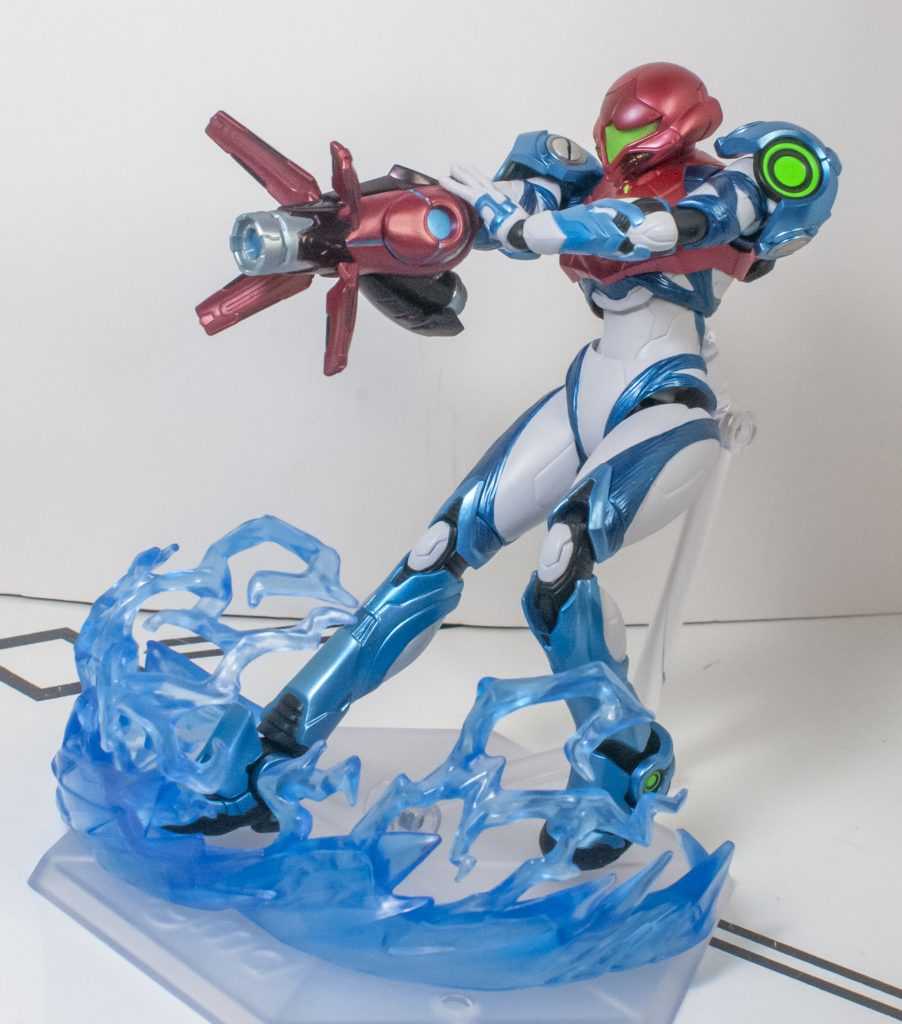
The kickback probably goes crazy.
It also has a totally different set of colors, metallic red, blue, silver and brown. It really highlights the lack of blast effect parts, though, as some kind of big energy shot would have been nice.
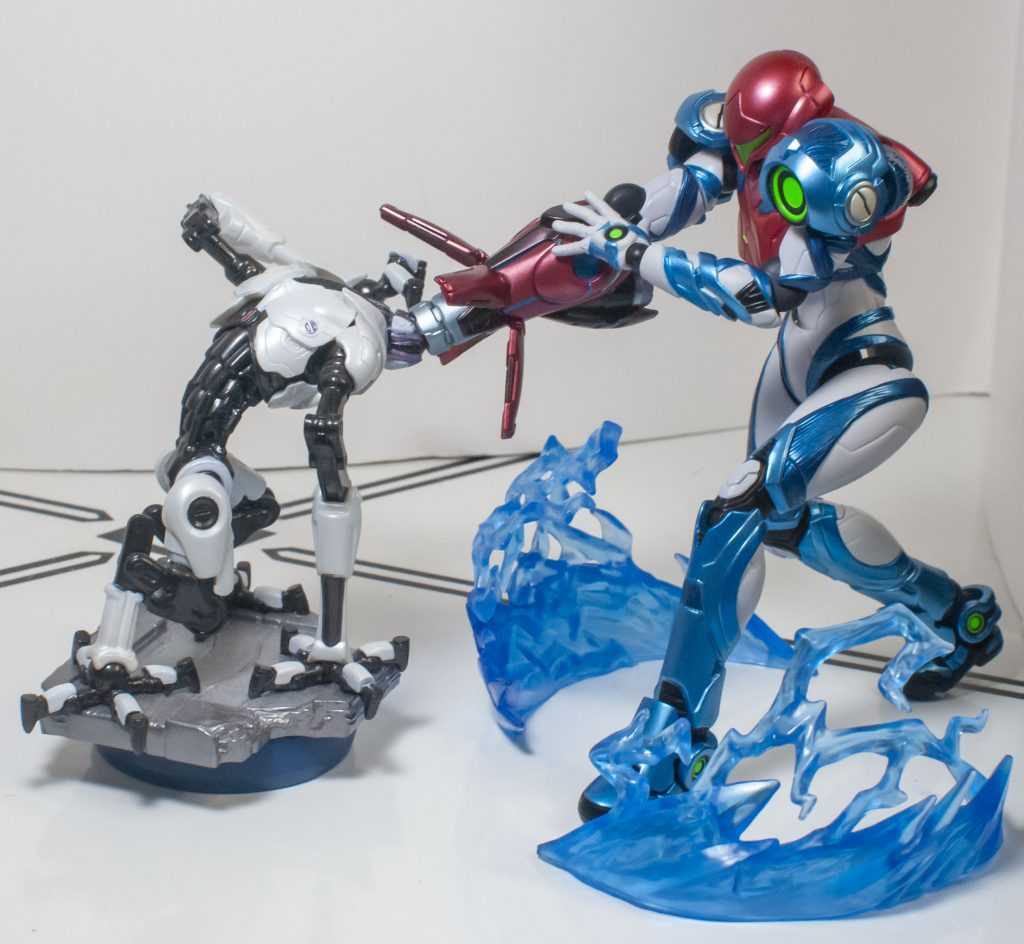
She’s taking no chances.
But she doesn’t, and she isn’t compatible with any Transformers blast effects, or the few her original Other M Figma came with.
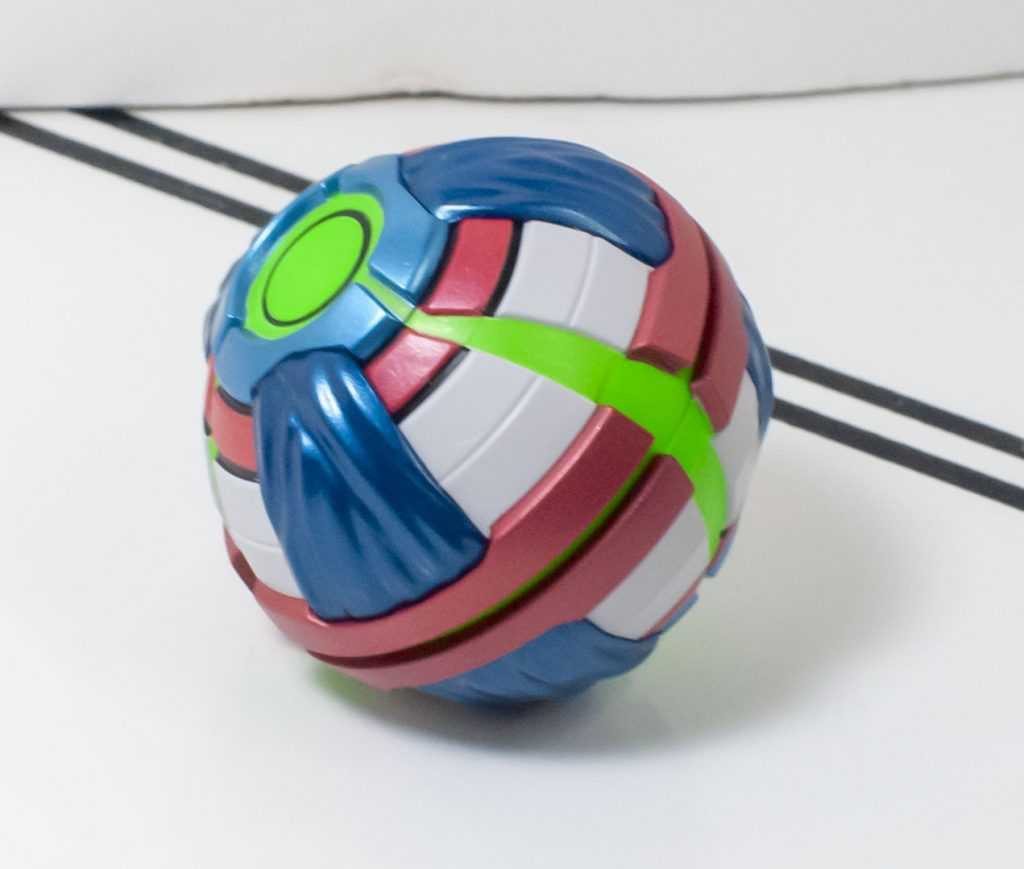
It’d be really easy for her to cheat at bowling.
Next, she’s got her morph ball mode, included as a totally separate accessory, since there was no way this figure was ever going to be able to transform into it.
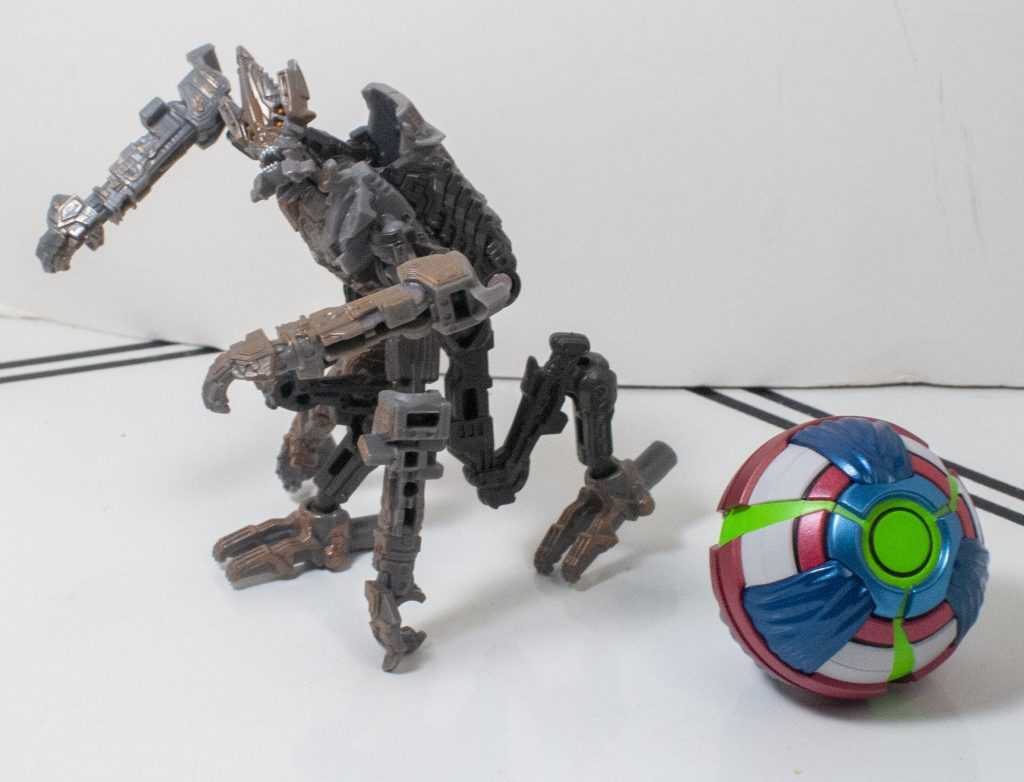
Totally inconspicuous.

Don’t try this in the game.
This little orb’s extremely colorful, in the same mix of blue, white, red and green as her body. Its surface is textured enough that you can place it on a table and not have it roll away (a problem with some other Morph Balls), but there’s also a hole in it to use her figure stand with.
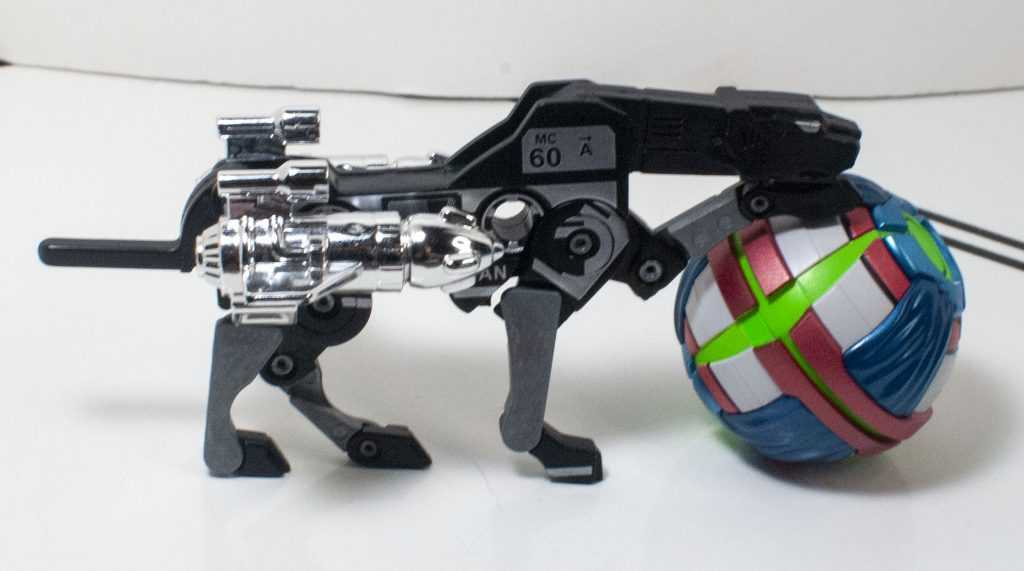
Hazards of the job.
Speaking of the stand, it’s as good as they always are. It’s made of clear plastic, and this model’s got a bigger base than the previous ones, as well as multiple ports for the three-jointed posing arm to mount on.
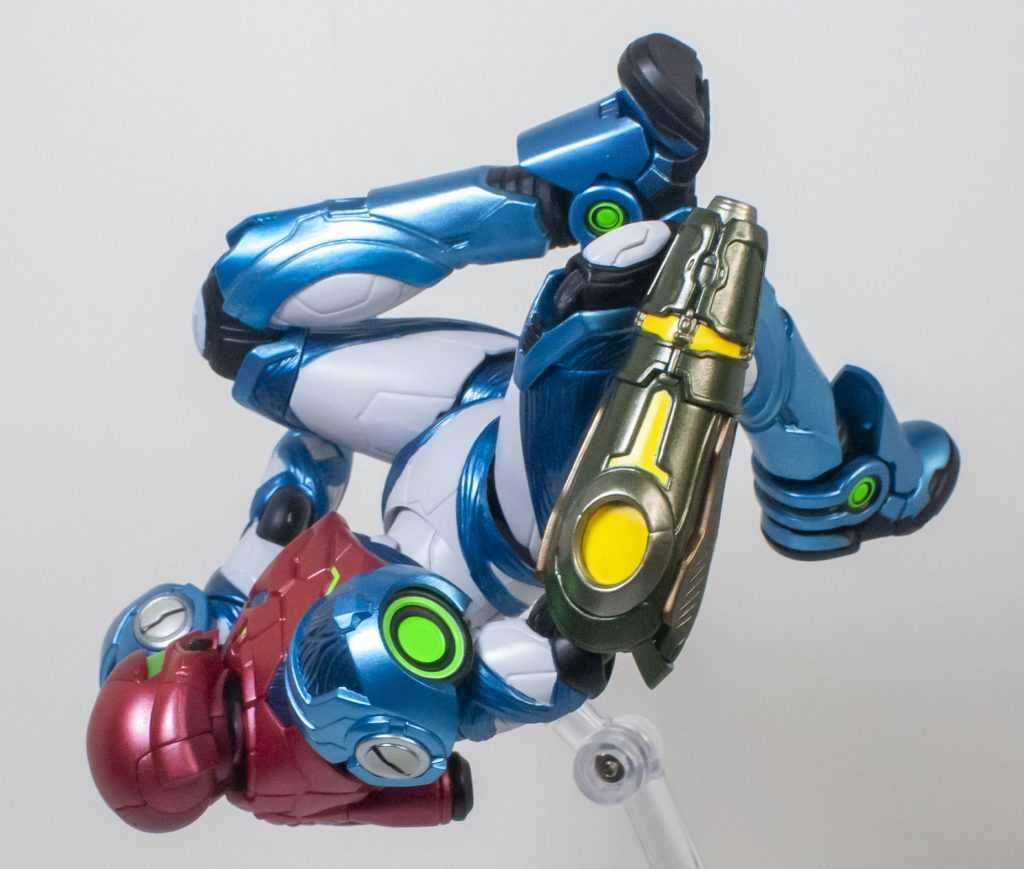
Strong enough to spin-jump with!
The instructions even talk about tightening the screws on it if you think the arm’s too loose (it isn’t). It does have that worrying stress mark that I mentioned earlier, though.
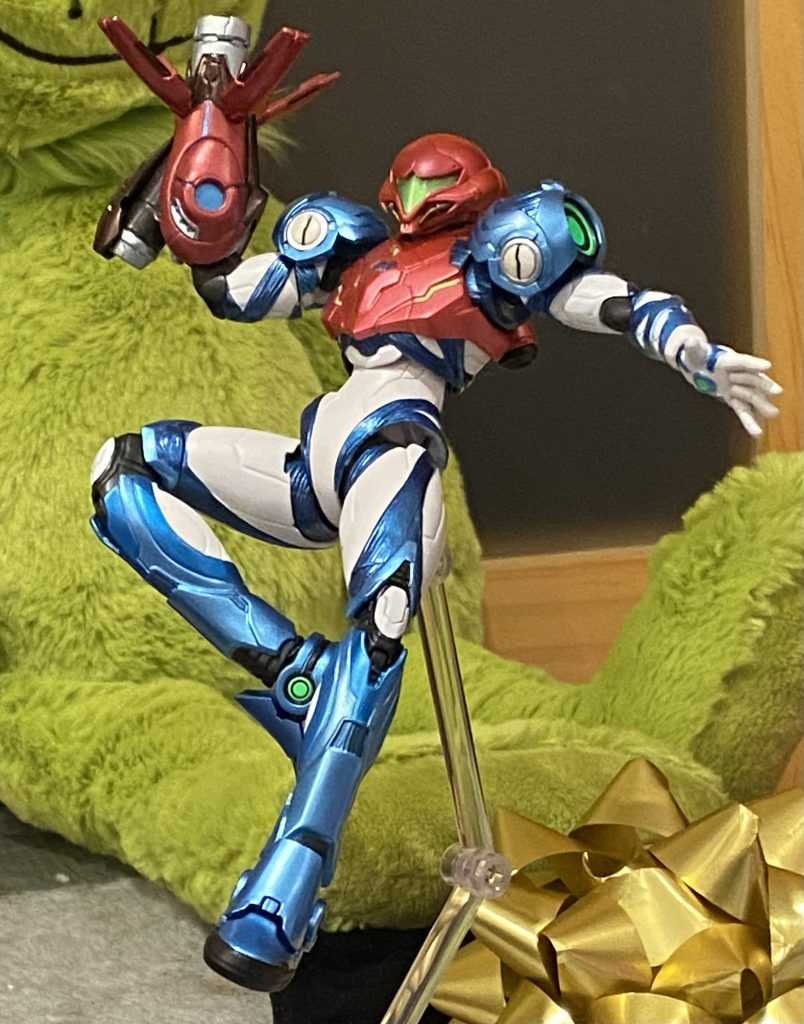
That won’t stop me from using it.
The final accessory is the most interesting and creative thing in the package. It’s a slice of blue wall, with a hand and foot molded into it. It’s designed to imitate her “Spider Crawl” power-up in the game, where she could cling on to those special blue walls. So, how it works is you pop out her hand (actually taking the joint with you this time), and her foot, and pop the sockets into the limbs that are attached to the wall.

Do it like this, and it’s a fancy kick.
Here’s the niftiest thing: There’s a working, surprisingly powerful magnet on the back of this part.
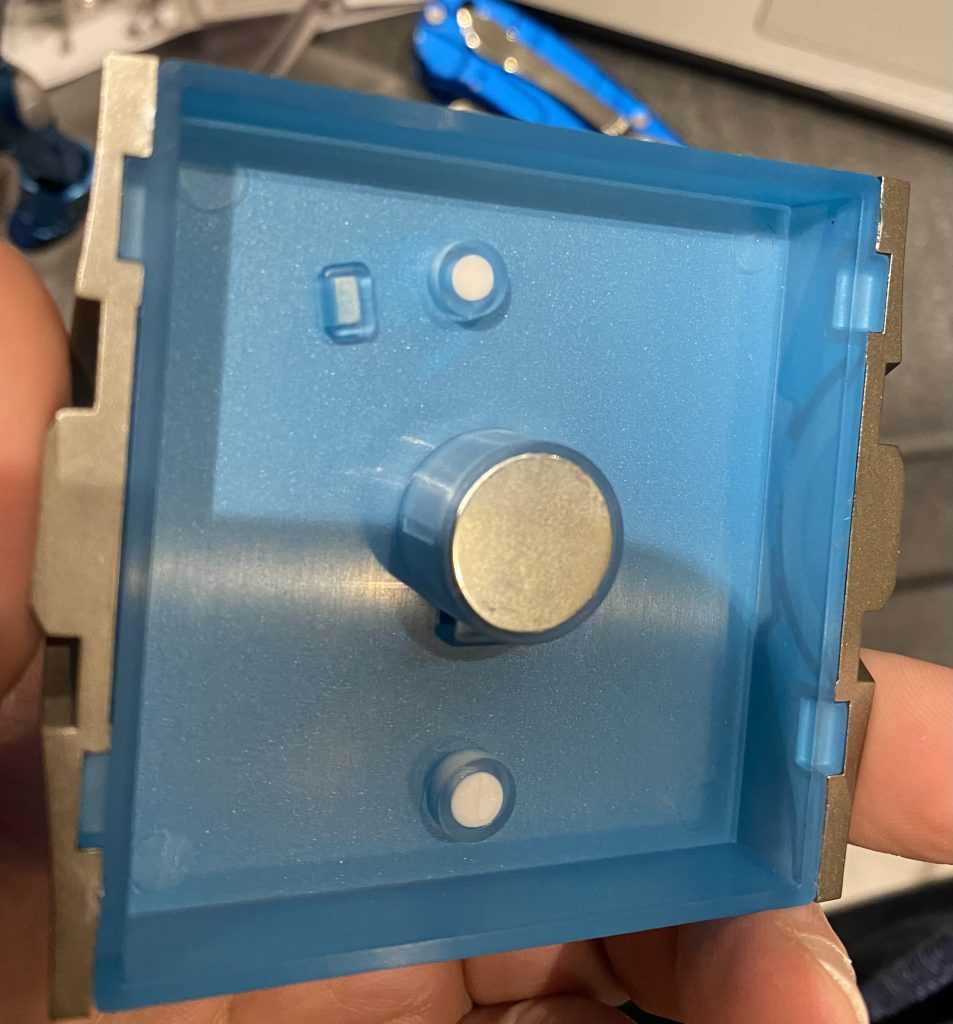
Yes, yes, how do they work. The answer is, surprisingly well.
You can attach her to any metal surface, and have her hang off of it.
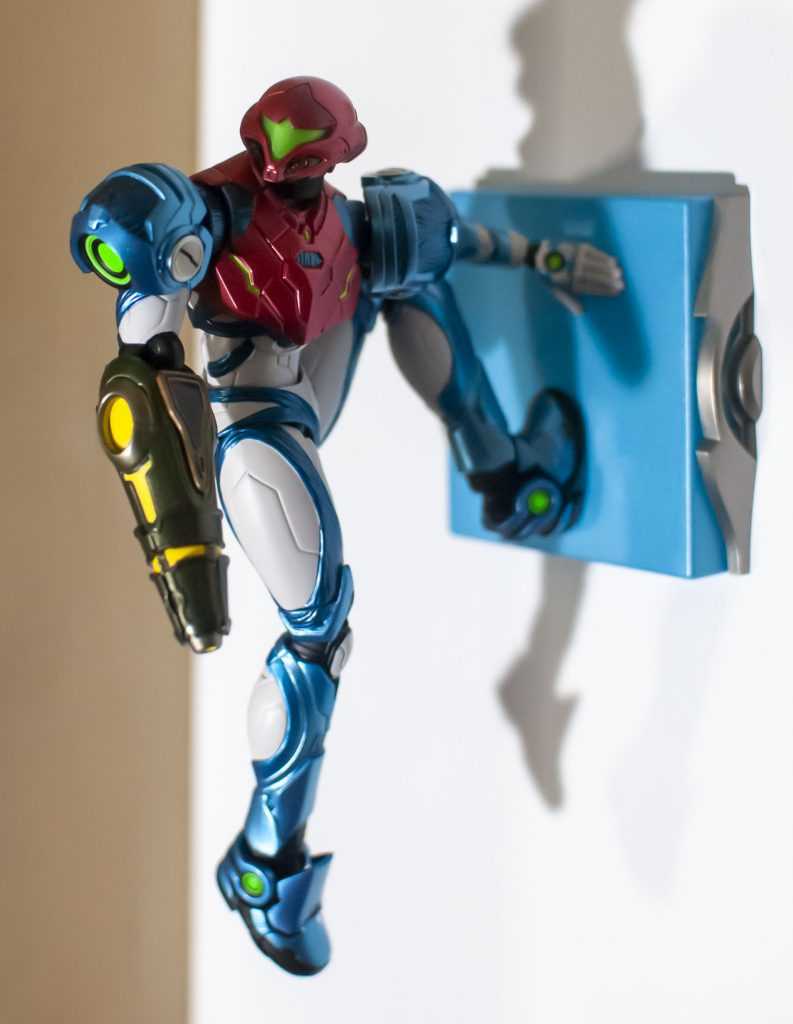
Like so.
I stuck her to my fridge for a bit, and she’s currently hanging off of a whiteboard above some of my figures.
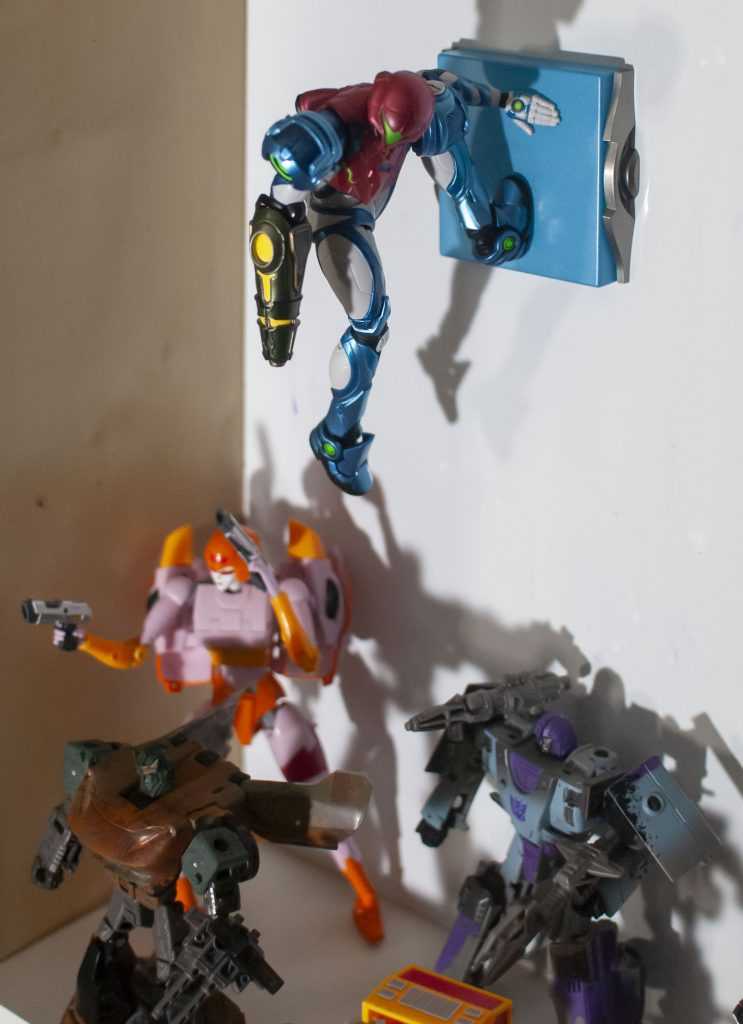
Trying to sneak by.
It’s a strong enough connection that I’m not worried about her falling, though I don’t think I’m going to permanently leave her up there.
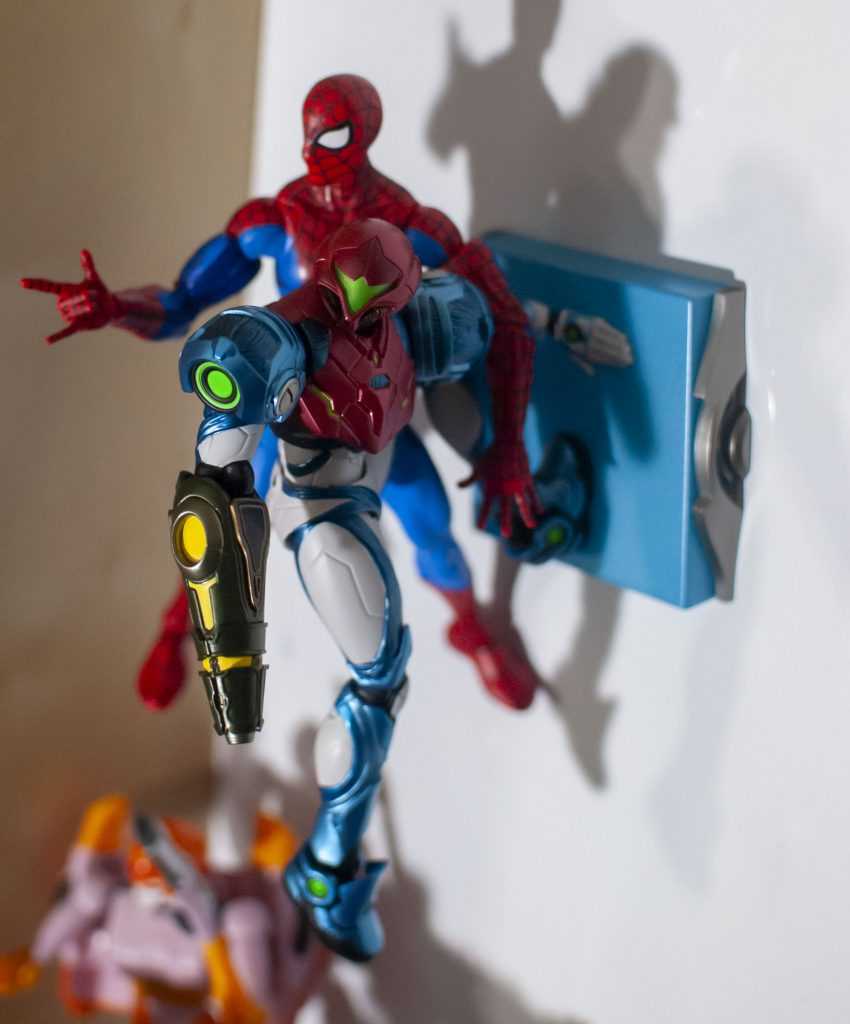
His powers are on the fritz again, so she’s helping him out.
It does nerf a bunch of her articulation, but it’s worth it for the stability of the gimmick, I think.
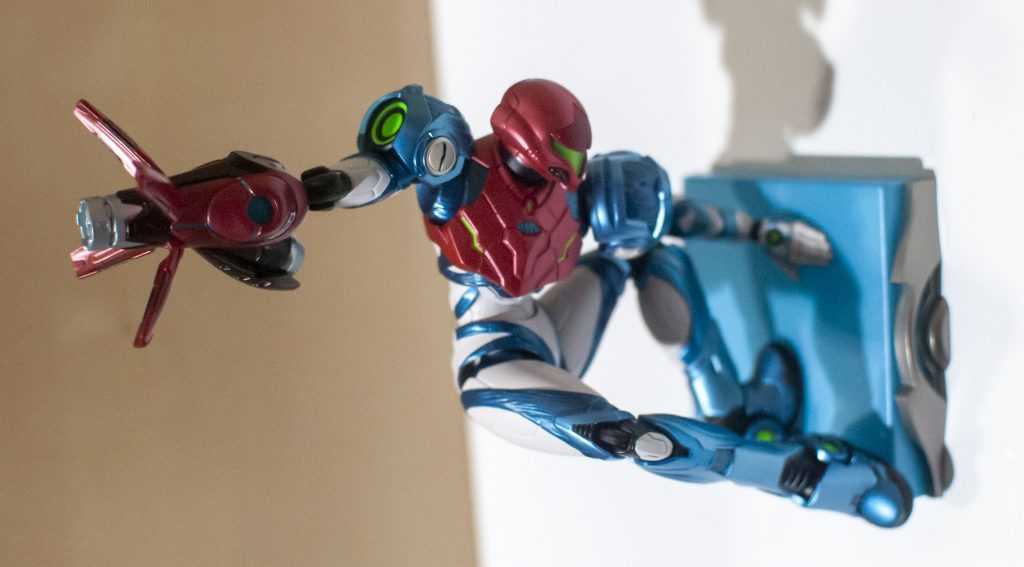
This is going to end poorly for her.
Overall
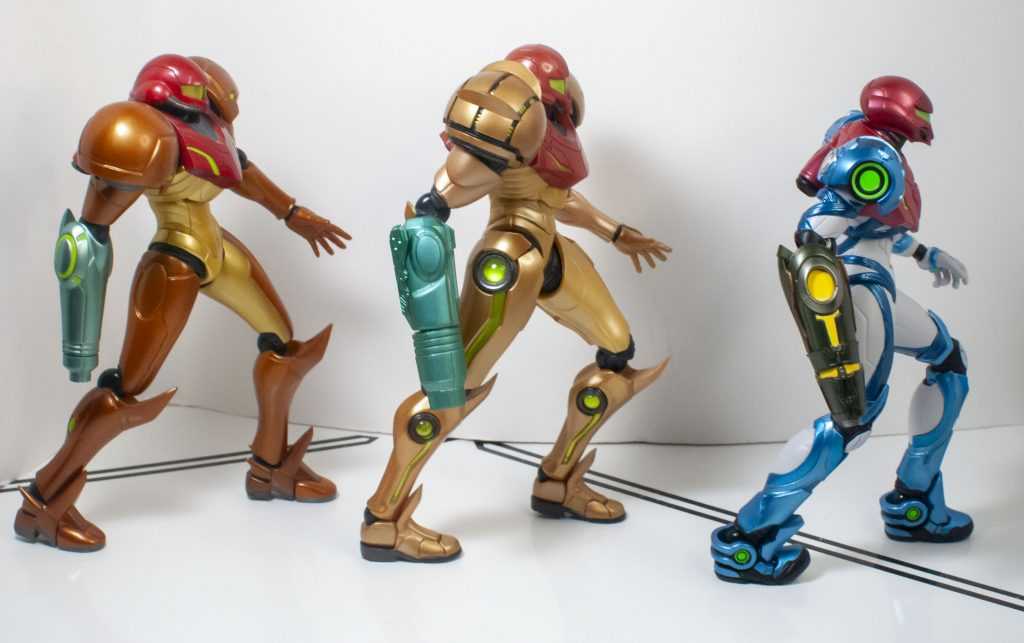
Evolution of Samus.
This is certainly a very pricey figure, but you can see where the money went. The engineering and sculpt on Samus are intensely detailed and intricate, and the accessories are all fun. It’s a great representation of a great design, and communicates her character very well. She’s easy to pose, and looks effortlessly cool. That said, it’s not perfect. So many of her surfaces being painted gives me pause, and the warnings of fragility in the manual make me fret, even if she doesn’t feel as fragile as that manual would suggest.
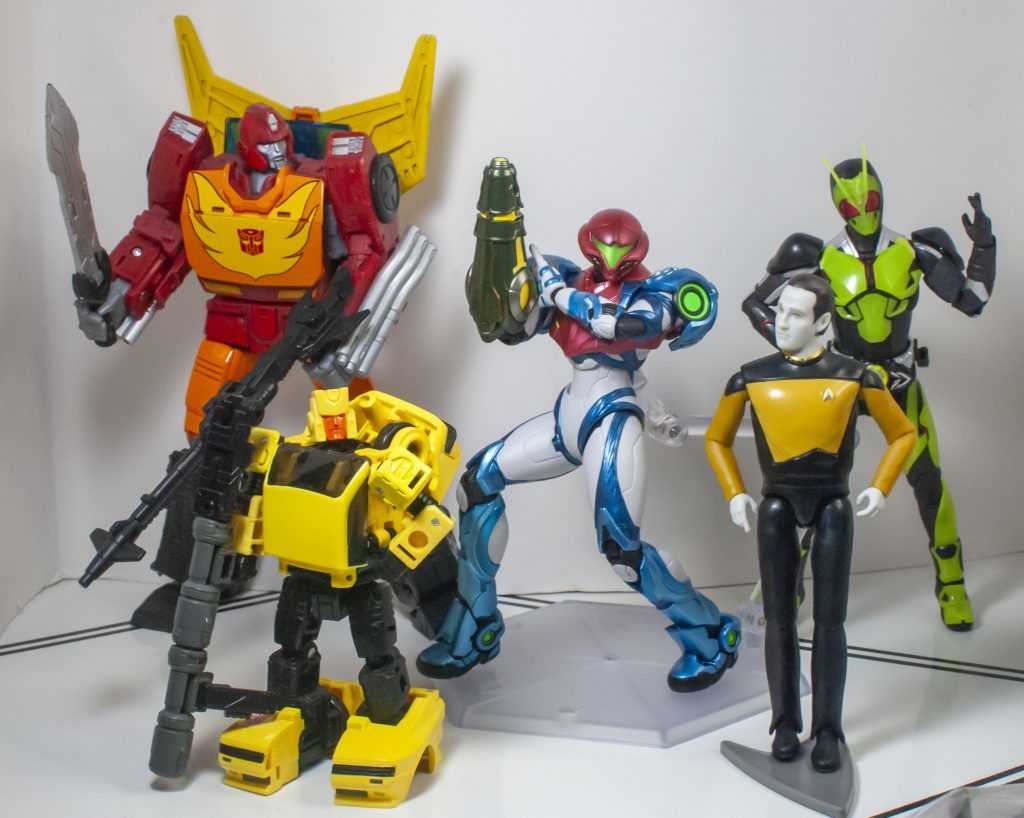
Comfort characters.
I think, on a technical level, the Prime 3 Figma is honestly a slightly better figure. But it’s a figure of her standard design, whereas this is of a design that, to me, is a lot cooler. And let me be clear, this one isn’t bad, she’s excellent, it’s a very close thing. Part of me wishes this had been one of her other three suits from Metroid Dread, just because a lot of the game’s iconic moments happened while she was wearing those. But this is the one in all the marketing, and was probably in production before the game launched, so this is what they went with, and it turned out grand, anyway. If they did make any of the other suits, though (two of them could be retools of this, the last one would probably need a new mold), I’d have a hard time saying no. I already said no to the EMMI robot they’re going to make, it’s very large and therefore probably costs a ton more. Still, I highly recommend this one, if you’ve got the cash, though I recognize that’s a big “if.”

We cut to black during the scene, so you can’t prove it wasn’t Capocollo that actually beat her and stole her upgrades.
This is definitely the most pricey single item I intend to grab for a very long time. And hey, it’s my new avatar on most of my socials, so I’d say that tells you how much I like it.
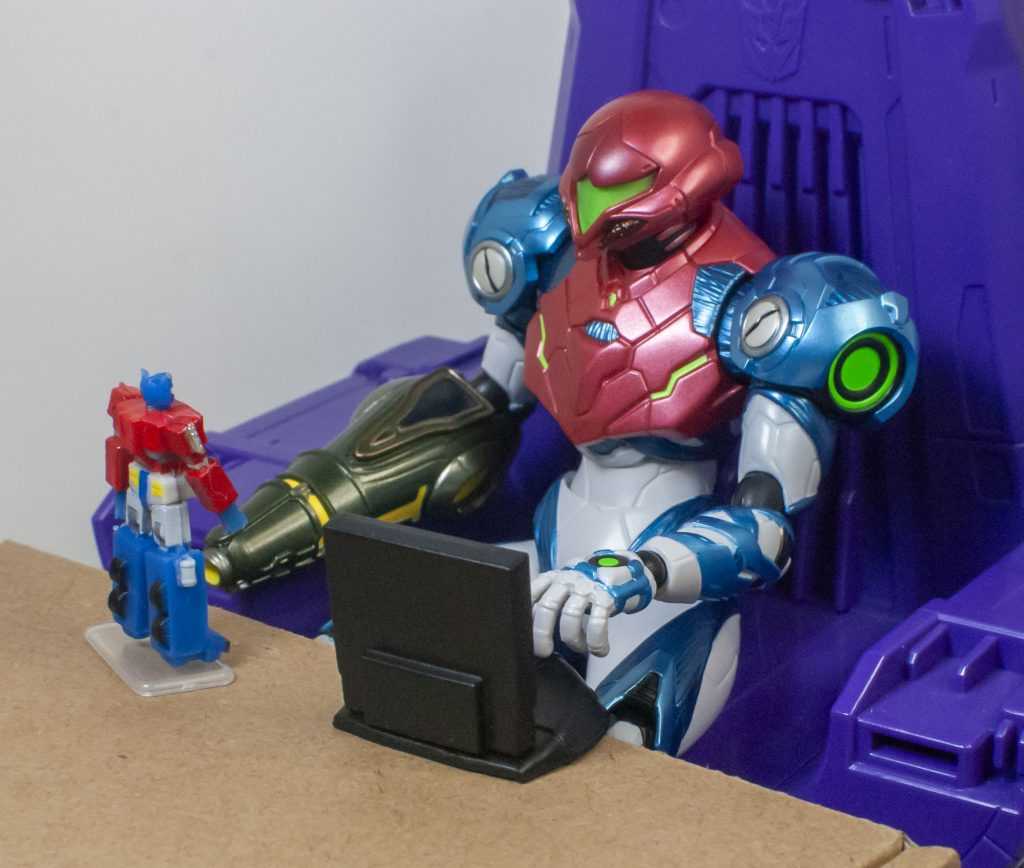
Anyway, back to work.
For over 100 Bot, Non-Bot, and Retro Bot Reviews, click here to view my archive.




